Part Two of Two
In last week’s issue, I shared the beginning of a journey—how, after a lifetime of rebuilding, I set off alone on a walk through the soul of Italy. From Colle Val d’Elsa to Rome, I carried more than just a backpack.
This week, I pick up the path where I left off. From Day 6 onward.
Day 6 – October 26
To Castiglione d’Orcia, 18 km. Total 116 Km
The first half of the day was glorious. My body felt light again—strong, even. I found a rhythm in my steps, and for a while, the aches of the past days faded into the background. But by early afternoon, the familiar fatigue crept back in. My backpack dug into my hips, my blister flared up, and the final hour became a slow grind.
Castiglione d’Orcia sits at around 600 meters above sea level, and the final ascent demanded considerably more strength. The views stretched endlessly, golden and green, and for a short while, the climb didn’t feel like effort.
As I walked, I realized something: being with others—while sometimes comforting—can pull me out of the experience. Alone, I notice more. The smells of the earth and trees, the wind shifting direction, the changing light. My thoughts come and go. Walking alone is a kind of meditation in motion.
I arrived in Castiglione around 2:00 p.m., but my accommodation was a few kilometers past the town. As I approached it, I realized it wasn’t the best choice. It was perched along a busy road, with the only restaurant a good distance away—more walking. I left my backpack Bacco in the room and headed out, hoping the restaurant would still be open at this time. It was. The risotto was average, but I was hungry, and options were few.
Later, back at the B&B, I met Alban—a young man, nearly two meters tall, cycling the Via from Turin to Rome. He was friendly, clearly eager to chat. We shared a few anecdotes during supper. I wasn’t in much of a talking mood and retreated to the quiet of my room for an early night.
As I drifted off in that modest space, I found myself thinking about family. How grounding it is. At times complicated, too. But fundamental. This walk is becoming more than a physical journey—it’s emotional, even spiritual. Each step seems to reveal some questions I needed to ask myself.
Day 7 – October 27
To Radicofani, 17 km. Total: 133 Km
I’ve chosen not to set an alarm each morning. I want my body to set the pace now. Around 6:00 a.m, I stirred. The weight of the past days had settled in; fatigue was becoming a steady companion. I felt it in my shoulders, in the slow rise from bed. I made myself a promise: Take longer breaks. No more rushing through the day without stopping properly for lunch.
The closest coffee bar was two kilometers away. It was a gentle way to begin: a macchiato and freshly squeezed orange juice. Alban was there too, and we shared a short pause together in quiet camaraderie.
By 11:00, the sun was getting stronger, so I took shelter under a tree to cool down and rest my feet. I slipped off my right shoe to check on my blister—it had burst. Carefully, I cleaned it, bandaged it, and as soon as I started walking again, I felt instant relief. I was no longer shifting my weight to avoid the pain. The body knows how to heal, I reminded myself. I tried to trust it.
Not long after, I saw a sign: 7.8 km to Radicofani. It was nearly noon, and I was already imagining a proper lunch, a long pause. I figured I’d arrive around 2:00 p.m., and the idea of a restful afternoon felt like heaven for my foot.
Just then, a man about my age passed me. We fell into step together and began to talk.
His name was Luigi, a Sicilian optometrist living in Paris. Walking, he told me, was his favorite pastime, and he’d done many pilgrimages around the world. We shared stories and laughs, reflections and silences, and time slipped away.
We arrived in Radicofani just after 2:00 and found a restaurant with a terrace that opened onto the piazza and a sweeping view of the green valley. It felt like a reward.
This was the kind of encounter I didn’t want to end but Luigi’s pace was faster—he averaged 30 to 35 km a day—so after lunch, he continued alone on to his next destination. Before he left, he insisted on paying for our meal, and we exchanged numbers. We texted daily to share our progress on the trail. There’s something sacred about these moments of unexpected connection—these small acts of kindness from strangers.
The trattoria in the village was a typical old-style Tuscan place—wooden beams, stone walls, and a chalkboard menu listing whatever the cook felt like making that day. I ran into the other pilgrims just as I was walking in. Naturally, we shared a table. Over bottles of house wine and bowls of ribollita, we traded stories from the road.
Guillaume, a Frenchman with a military sense of order carried a small notebook in which he recorded every detail of the walk—distance, elevation gain, temperature, time of departure and arrival, what he ate at each stop, perhaps even the number of blisters he’d counted on fellow pilgrims’ feet. He could tell you, with unnerving precision, the average number of minutes per kilometer between villages. “I estimate we’ll reach Acquapendente at 15:42,” he declared, as if reading from a train schedule.
He clearly was on a very different kind of pilgrimage than the rest of us. While I was trying to lose track of time, he was clinging to it with both hands.
That night, I stayed at a quaint inn in the old town center called La Gioiosa (“The Joyful”). The name could not have been more apropos. My blister was healing and I was able to get some sound sleep.
Day 8 – October 28
To Acquapendente, 24 km. Total: 158 km
Today was about clarity. The sky was cloudless, the air crisp, the road hushed. I felt good—even as my fascia voiced its complaints.
Just a few kilometers ahead, I’d leave Tuscany behind and enter the Lazio region. I could see the landscape beginning to shift—gentle hills flattening, the agricultural palette changing, even the air taking on a different scent.
By midmorning, I had slipped on my headphones for an hour of The Book of Joy, the dialogues between the Dalai Lama and Desmond Tutu. A special friend—named Joy, fittingly—had recommended it. It was the perfect companion on this path: a meditation on fear, grief, illness, death, and how we might carry those things with grace.
The Francigena app suggested taking a bus for the last stretch into Acquapendente—a few kilometers along a busy provincial road with no real shoulder. At a roadside trattoria, I ran into a few other pilgrims. An older man approached us, asked if we were heading into town, and offered us a lift in his Econoline van—five euros each. It beat waiting for a bus that might never arrive.
Five of us agreed. Two rode up front with the driver. The rest of us followed behind him as he opened the back doors. And there, in place of seats, were three faded lawn chairs sitting on the floor.
We looked at each other, stunned. What were we going to do? The bus was unreliable, and walking on that road felt riskier than this rolling comedy of a van. So, we climbed in. One pilgrim brought his pizza with him—balancing it like a prize as the van rattled down the road, tossing us like loose luggage.
When we arrived, we laughed it off. Perhaps we were already being watched over by the saints of the Via Francigena.
That afternoon, I rested and settled into Casa Piccola Perla, a modest but comfortable spot. And as I sat with a simple dinner, the idea of freedom kept circling in my mind. I began to imagine returning to Tuscany next year—renting a little place for six months, maybe more. There’s something calling me back. Not just the scenery—but a quieter rhythm. A way of being. A life with less noise.
Meanwhile, Emanuela was in Boston visiting her nephew Glauco and his wife Micaela for a week, but she still followed my progress through the Find My app. We exchanged notes about our days. It was comforting, this invisible tether stretched between us. That day she reminded me that she had not received my photo of the accommodation, as I had been duly doing at each stop since she asked me to do so. I took a photo and sent it to her, still wondering the motive behind her mysterious request.
Day 9 – October 29
To Bolsena, 23 km. Total: 181 Km
I wasn’t expecting temperatures to climb so close to 30°C this late in October. By noon, my T-shirt was soaked through. But my body held up well, and more than that, my path was beginning to take shape—not just beneath my feet, but inside me.
By lunchtime, I reached San Lorenzo Nuovo, a small village about five kilometers north of Lake Bolsena, my final destination for the day. It was Saturday, and the local coffee bar in the main piazza was still buzzing with life. With the weather unseasonably warm and a long holiday weekend underway, it seemed everyone had flocked to the lake to soak up what might be the last “summer” weekend of the year.
I stopped for a cappuccino and an aragosta pastry. The sun was warm on my face. I could have stayed there all afternoon, but I was eager to continue. I hadn’t booked a place to sleep in Bolsena and was hoping to find something on arrival.
As I followed quiet gravel roads, the shimmering blue of Lake Bolsena came into view. The first thing I did when I arrived in town was ring the bell at the large gate of Convento Santa Cristina. A nun with a soft, kind voice answered.
“Abbiamo sempre posto per i pellegrini. Entra, caro. Vieni con me, ti faccio vedere dove dormirai.”
(We always have room for pilgrims. Come in, dear. I’ll show you where you’ll be sleeping.) And at that moment, ordained by a sister of the cloth, I had officially become a pilgrim.
The kindly Sister gave me a grand tour of the convent and told me I was welcome to help myself to the persimmons freshly picked from the garden. I could join the resident nuns for supper, or if I preferred to eat out, I just had to be back by 10:00 p.m.—after that, the doors would be locked.
After a shower in the shared bathroom—no stall, just a showerhead that sprayed water freely across the room—I took a short nap, then headed out to explore the town and find dinner. At a local pizzeria, I came across a group of students from France walking the Francigena on a tight budget. I sat with them, and in the spirit of camaraderie, I offered to cover the pizza.
I returned to the convent a few minutes before 10:00. My bed was in a large dorm room shared with about fifteen other pilgrims. I must have been the last one to arrive, so I tiptoed in quietly and slipped under the covers.
Not long after I settled in, the little nun who had welcomed me appeared with a flashlight and whispered gently,
“Agostino, tutto bene?”
“Sì sì, tutto bene, suora,” I replied.
She came closer—and to my surprise, she tucked me in. “Buona notte, che il Signore sia con te »
I was taken aback. In that moment, I felt like I was seven years old again, being watched over by my mother. It was tender, unexpected, and profoundly soothing.
Day 10 – October 30
To Montefiascone – 19 km. Total: 200 km
When I opened my eyes around six, half the beds in the vast room were already empty. My blister seemed to have finally healed, and though my hamstring still whispered its presence, I felt strong.
By early afternoon, I was sitting in Montefiascone’s historic piazza, feet up. A soft rhythm had settled in—walk, eat, rest, reflect.
Montefiascone is a scenic hilltop town overlooking Lake Bolsena, known for its medieval charm and the legendary Est! Est!! Est!!! wine. It’s a must-stop for pilgrims on the Via Francigena, not just for the sweeping views but perhaps also for its papal history—popes once chose this place for their summer residence. A nearby sign read 100 km to Rome. My own calculations showed a few more than that, but the symbolic weight of that number landed solidly.
I checked into my B&B around 3:00 p.m., where my host Marilena greeted me at the door. Over tea, we chatted in her living room. A former Italian diplomat, she had spent over 30 years stationed in Asia. Now, she opened two of her rooms to pilgrims.
“Pilgrims are messengers of the world,” she told me.
The phrase landed with quiet force.
I asked if she knew of a laundromat in town—my faithful backpack, Bacco, was starting to emit a less-than-holy aroma.
“Agostino, oggi è domenica. Sono tutti chiusi,” she said, smiling.
(Today is Sunday. Everything’s closed.)
That evening, after supper, I found her reading in the living room. I sat on the armchair beside her and we shared stories—her life abroad, my own path as an emigrant whose family had once left their motherland, Italy, behind.
Before I headed to bed, she asked if I’d like to leave my laundry outside my door. I hesitated, not wanting to impose, but she insisted. So I did.
Later, in the quiet comfort of my bed, I made a decision:
Once the pilgrimage was over, I’d return to Colle Val d’Elsa and look for a place to rent for next spring.
Somewhere along the Via, something had shifted. Maybe it was clarity. Or simply space—the kind that lets you finally hear what’s been inside you all along.
I couldn’t wait to tell Emi in the morning. I was sure she’d help me find the perfect home.
Day 11 – October 31
To Viterbo – 19 km. Total: 219 km
Upon walking outside my bedroom door, all my laundry was clean and folded. Breakfast was already set on the kitchen table, and the rich scent of espresso drifted from the moka pot.
I stood there for a moment, wordless. Marilena’s kindness had left me overwhelmed.
When I finally closed the door behind me, her presence lingered—gentle, warm, effortlessly thoughtful. I found myself wondering: Why can’t we all be a little more like her? The world would be so much softer.
Later, I made the mistake of skipping my midday break. The second half of the day turned into a slog—my body protesting with every step.
Emotionally, I felt tangled. So I decided to go into “silent mode” for the day—no phone, no texts, no distractions. Just me. A kind of personal retreat within the pilgrimage.
Thoughts came rushing in—about my future, the possibility of returning to Tuscany, what I was really looking for. Doubt crept in—not about the life I wanted, but about yet another big life change. Was I running toward something—or away from something again?
Conversations with my sons echoed in my head. When I mentioned the idea of spending more time in Italy, they were supportive in their own ways:
Mark said, “Dad, that’ll give us a reason to come and visit.”
Kevin replied, “Italy in only a direct flight away.”
And Vittorio, living in Los Angeles, said: “Whether you call me from Montreal or Italy, it doesn’t really change anything.”
Later that evening, I shared a photo of my hotel with Emi, as she insisted since I had left. She joked that it looked like a scene out of a Stephen King movie—The Shining, to be exact.
And, well... it was Halloween night.
But why she wanted the pictures? She would not say.
It turned out to be the worst accommodation of the trip—and I had booked two nights. I’d decided to take a rest day in Viterbo, to give my body a chance to catch up with my spirit. But this place? Definitely not the retreat I had in mind.
Day 12 – November 1
Rest Day in Viterbo
Sometimes the most important part of a pilgrimage is knowing when to pause. Viterbo offered that moment—a brief intermission where both body and spirit could exhale.
I spent the afternoon at the Terme dei Papi, a historic thermal spa well known among locals. The alternating hot and cold pools worked wonders on my aching legs, especially the fascia that had been nagging at me for days. It felt like therapy for more than just the muscles—it was a full reset.
Viterbo itself carries the energy of retreat. In the 13th century, it served as a refuge for popes and became the birthplace of the papal conclave tradition. There’s something about the city—its medieval walls, its stillness—that invites reflection.
Under the near-summer sun of this unseasonably warm November day, I floated in silence. Not moving forward, not pushing through—just being. For the first time in days, I wasn’t a pilgrim on a mission. I was simply resting.
The next day I got up as usual around 6:00. My legs were ready. The spa day had helped—not just my body, but my mindset. I left Viterbo under a blue sky and steady sun, walking briefly through rocky, shaded paths just outside the city. The trail carved into the land—quiet and timeless.
Not long after, I joined a section of the Via Cassia, the ancient Roman road that once connected Rome to the north. Walking this stretch, I thought of all those who had passed here before—traders, soldiers, pilgrims. The road was flat and open now, crossing farmland and fields in silence. It was one of the highlight stretches of the walk so far.
In one field, I saw two very old people—perhaps a couple—trying to hook a trailer to a tractor. What amazed me was how in sync they were, working with calmness and intent. Slowly, she climbed into the driver’s seat while he walked beside the tractor, guiding her.
I reached Vetralla around 2:15. The small inn was quaint and very comfy.
Day 14 – November 3
To Sutri – 27 km. Total: 266 km
The landscape kept changing—Tuscany now fully behind me, and Lazio unfolding in new tones. It was flatter here, with different vegetation. The wildness of earlier days had softened into a quieter, more domesticated beauty.
Today’s walk was nearly 27 km, so I scheduled two breaks. By 11:00 a.m., the heat was intense, and I took refuge in the shade of a tree for a while, letting my hat, t-shirt, and socks dry on a branch.
Near Capranica, I spotted two abandoned towers in the distance. I made a small detour to check them out. As it turned out, they were funeral monuments—built for wealthy Roman families.
Sutri appeared on the horizon, a small hilltop town with ancient roots. I spent time wandering, letting the town speak. The roads here felt old in a different way—Roman, deliberate, echoing deep history.
Something within me had shifted too. I was no longer counting the kilometers. A sense of near-nostalgia crept in, knowing the end of my journey was fast approaching.
Day 15 – November 4
To Campagnano – 28 km. Total: 294 km
This morning began with the first light drizzle since I started the Via. The rain was gentle, more refreshing than bothersome.
At a coffee shop just outside town, I met fellow-pilgrims Maurizio, Tiziana and Monique. We ended up walking together for quite a while, sharing stories as the kilometers passed. Along the way, we passed waterfalls and, unexpectedly, stumbled upon a Roman amphitheater—a surreal sight tucked into a wooded path, where ancient stones blended with moss and trees.
By evening, we’d met again and they invited me to join them for a homemade dinner at their Airbnb. We shared wine and laughter over steaming bowls of bucatini all’amatriciana prepared by Maurizio. It may have been the best meal of the entire pilgrimage—not just for the taste, but for the warmth and communion around the table. We told stories, laughed deeply, and let the evening stretch.
My B&B was a small cabin on the outskirts of town. I was lucky to be walking—I reaching it by car might have been even harder. Lying in a less-than-comfortable hostel bed, a little tipsy from the wine, I took a photo of my modest accommodation, and sent it off to Emi. Then I slowly drifted off.
Day 16 – November 5
To La Storta – 22 km. Total: 316 km
Another long day. The walking wasn’t difficult, but the accumulation of miles was starting to weigh more heavily. My legs still carried me, but with each step I could feel the countdown.
I walked again with Maurizio and Tiziana. Their company was warm and pleasant, but I realized it was pulling me slightly off my inner path. I needed silence to fully absorb what this journey was becoming.
The evening turned into a comedy of errors. I got on the wrong bus and ended up heading in the opposite direction of the laundromat I needed. I ended up walking 3 kilometers to get there. Then, in a moment of forgetfulness, I left the plastic bag in which I’d carried my clothes inside the dryer. It melted. Oddly, I just laughed. I piled my clothes into a sweater and walked back to my hotel.
I went to bed early, knowing this was the last night I’d sleep along the Via Francigena. A bittersweet feeling settled over me.
Day 17 – November 6
To Rome, 24 km. Total: 340 km.
I woke before dawn, wanting to get a head start and walk this final stretch alone. I packed Bacco neatly, everything in its place, and headed to the coffee bar down the street for my morning fix: cappuccino and a cornetto integrale (whole wheat croissant).
La Storta is a suburban town on the edge of Rome. There was a 4-kilometer stretch ahead along a busy road with no sidewalk, so I hopped on a bus and got off just before entering the Riserva Naturale dell’Insugherata, a protected natural reserve. Signs warning of wild boars were posted at the entrance. Soon after stepping into the forest, I noticed the path was covered with cinghiale (boar) footprints. Somewhat worried, I kept clanking my walking sticks together to scare off any menacing critters.
I was relieved to reach Monte Mario, where the forest opened up and the presence of joggers was reassuring. Before long, I ran into Maurizio and Tiziana—they’d also left early. We walked together for a while, but then I told them, politely, that I needed to finish the journey in silence. They understood, and I slowed my pace to let them continue ahead.
At the top of Monte Mario, I caught my first glimpse of Rome’s skyline—and, in the middle of it, the dome of Saint Peter’s Basilica. A shiver ran through me. I was entering Rome not just as a traveler, but as a pilgrim. Excitement overtook the fatigue as I descended the winding road to Viale Angelico, the long, straight avenue leading to the Vatican. My emotions swelled.
It was exactly noon when I stepped into Piazza San Pietro. I walked to the very center, absorbing the vastness and splendor of this sacred place. A wave of emotion overtook me.
I burst into tears. There was no use holding them back—only surrendering to the moment.
Sixteen days of walking poured out in a single flood of emotion I couldn’t quite name. Blistered feet, clear morning skies, strangers who became companions, rolling hills and gravel roads, the friendly solitude, the whispered voices from above—all of it spoke to me in one unified voice. It was a transformative explosion of deep satisfaction.
Each day of the journey I had dedicated my walk to someone in my life, present or gone. Today, it was for my mother. She walked beside me the entire way—from the heavens.
And then the voice I had heard a few days ago returned:
Dying isn’t the tragedy—never having lived this experience would have been.
The Via, my road back home.
Instead of flying back to Montreal the next day, I rented a car and drove back to Colle Val d’Elsa. The plan was to look for a house to rent for six months starting the following spring. Emi and I spent a lot of time together that week, visiting many homes.
Emi’s Request...
Just before I left to return to Montreal, she handed me a small package. Inside was a book entitled Room to Roma. Each page featured a photo of every room I had slept in along the Via Francigena. I was speechless. And that doesn’t happen very often.

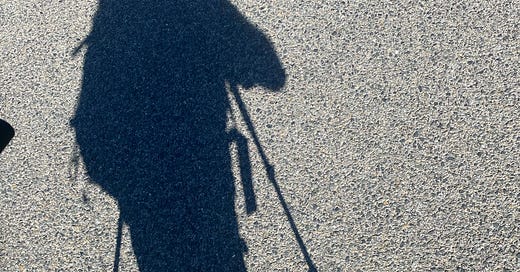


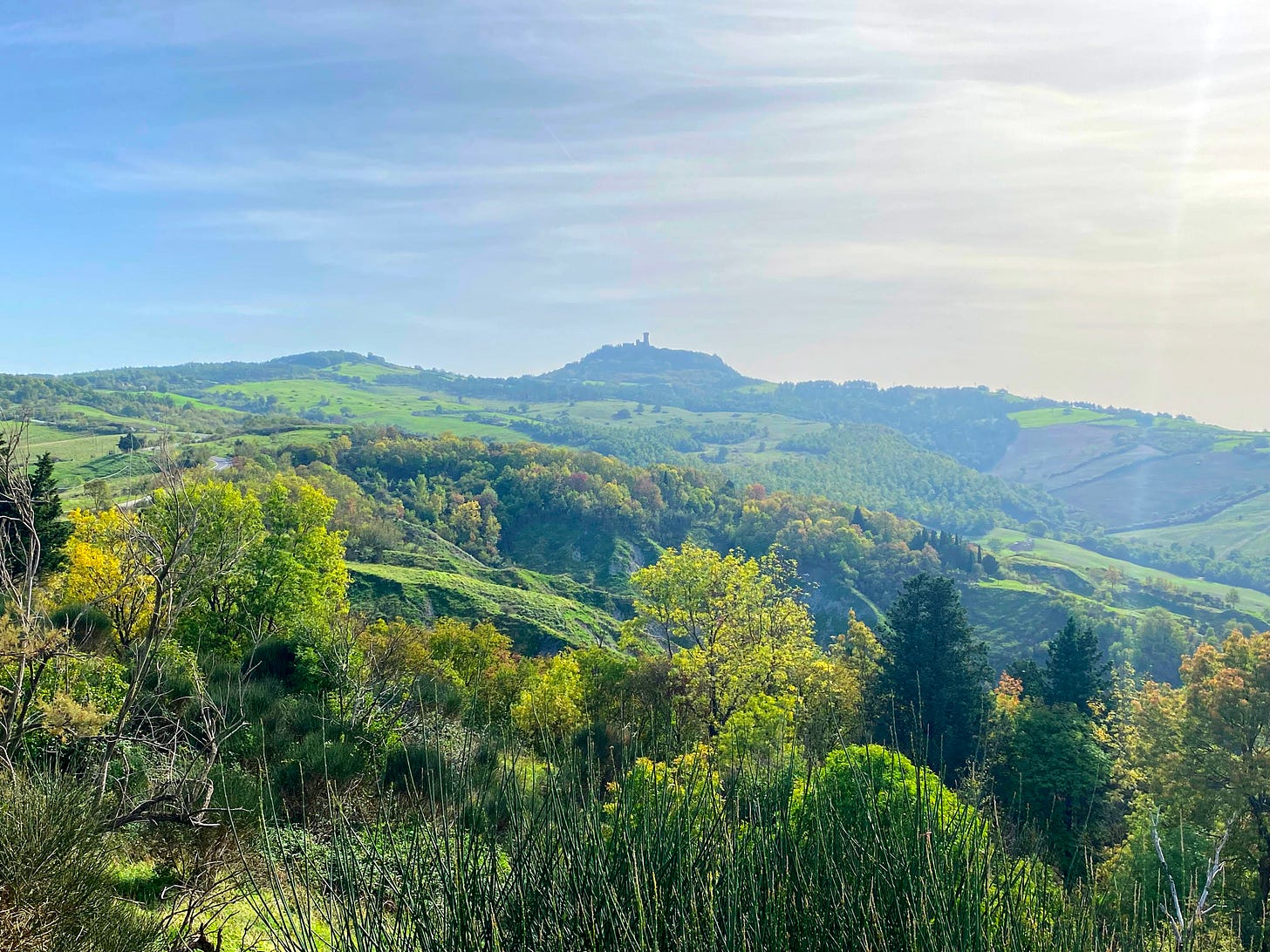
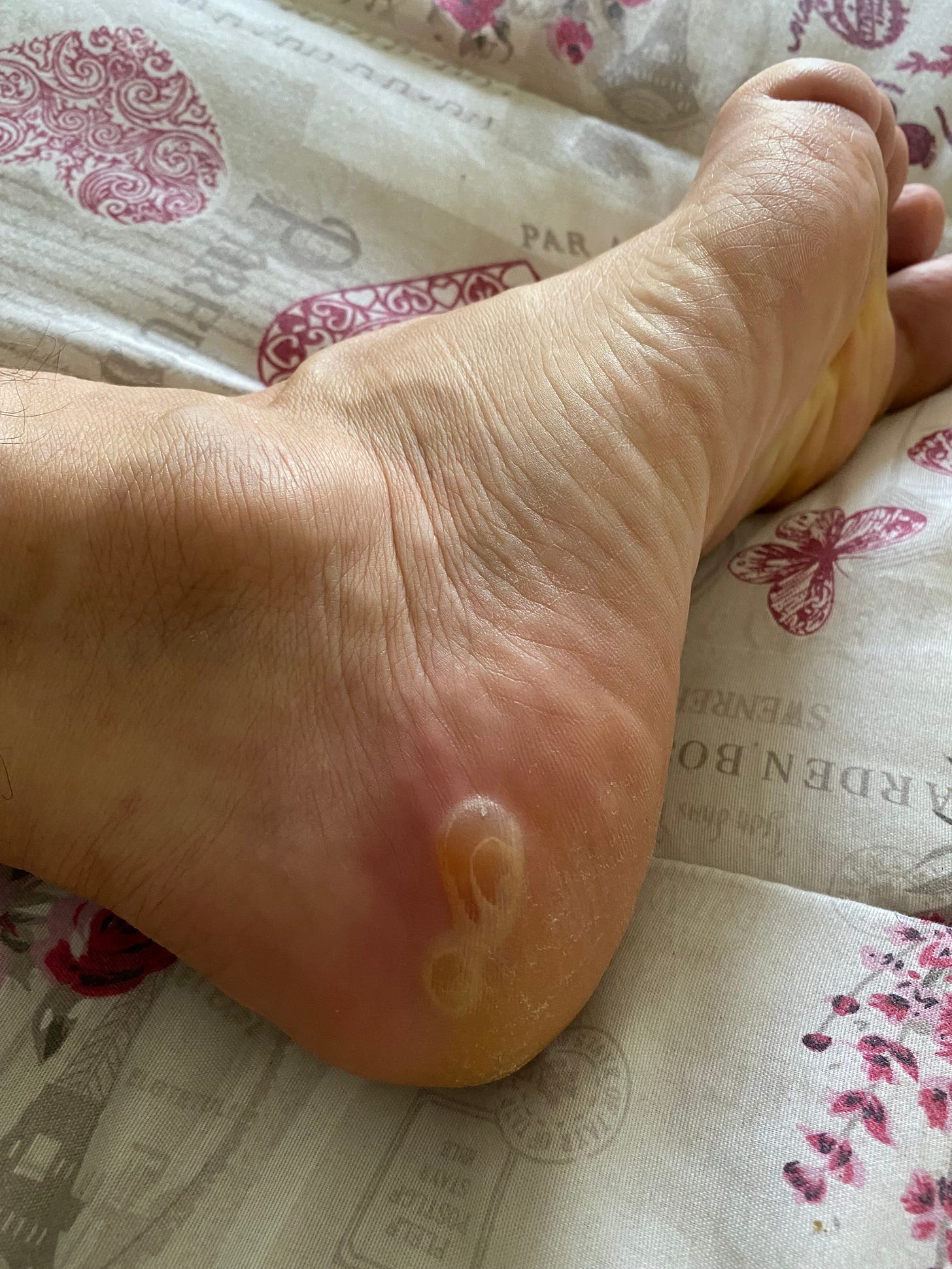


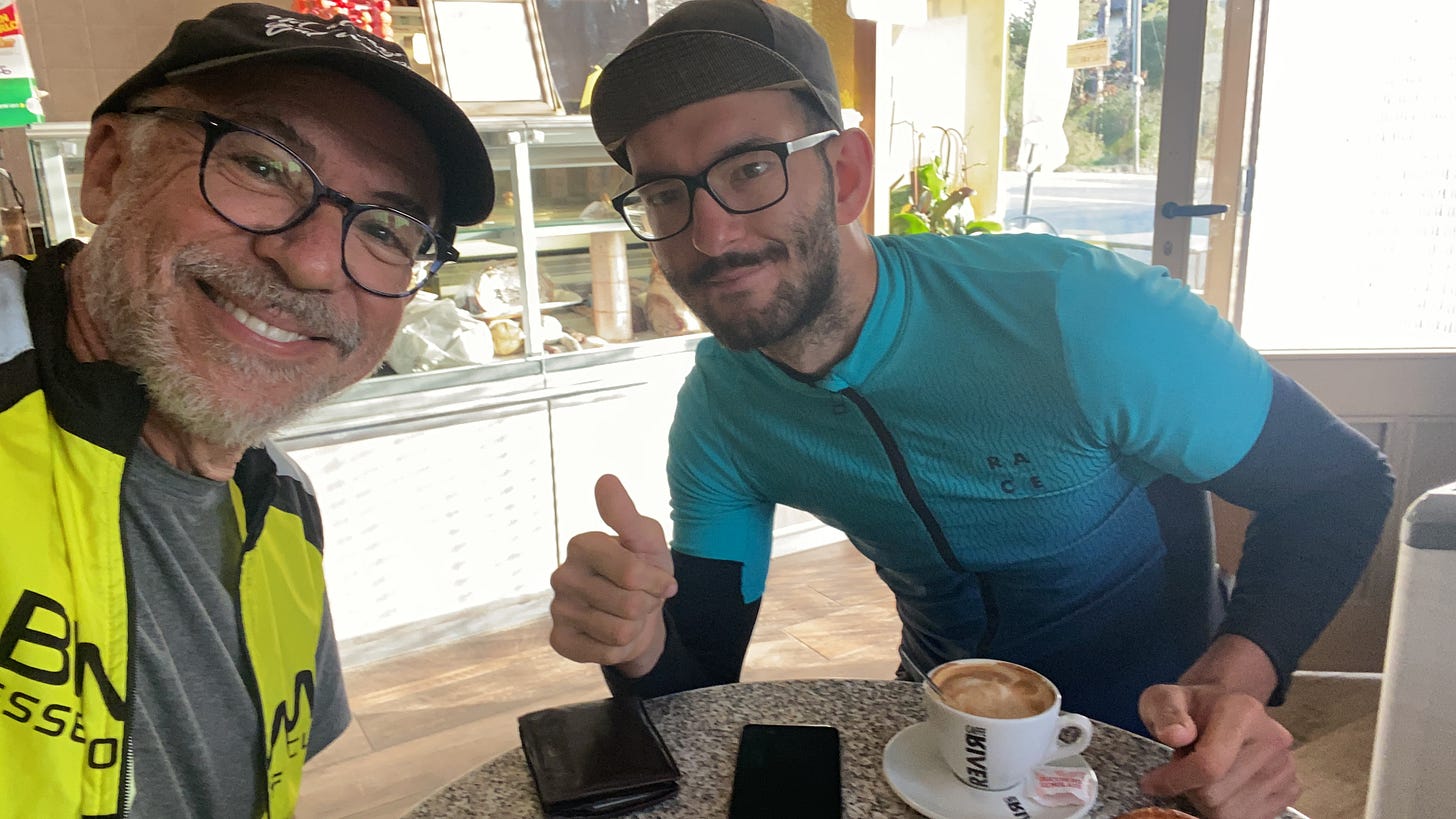
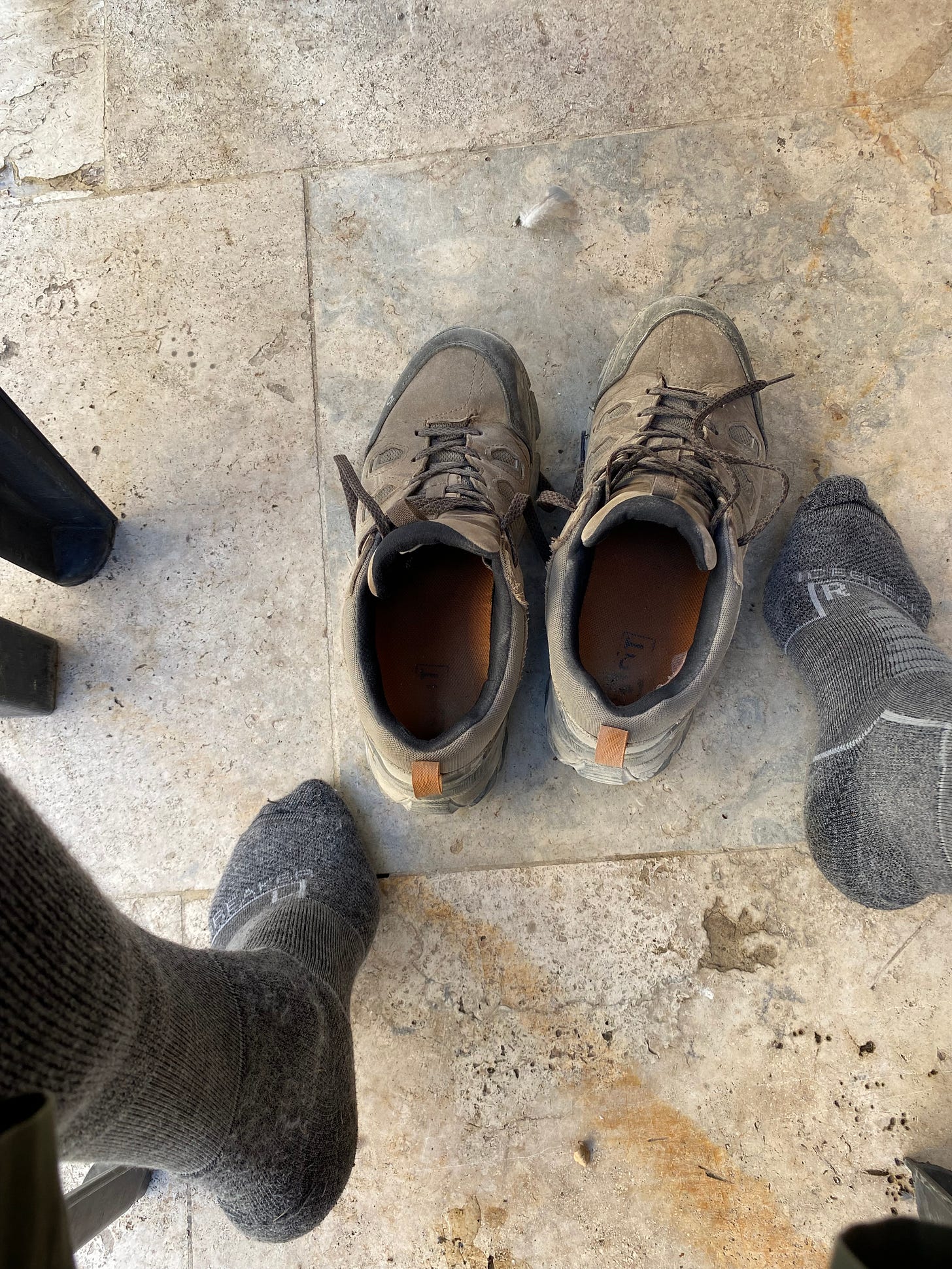
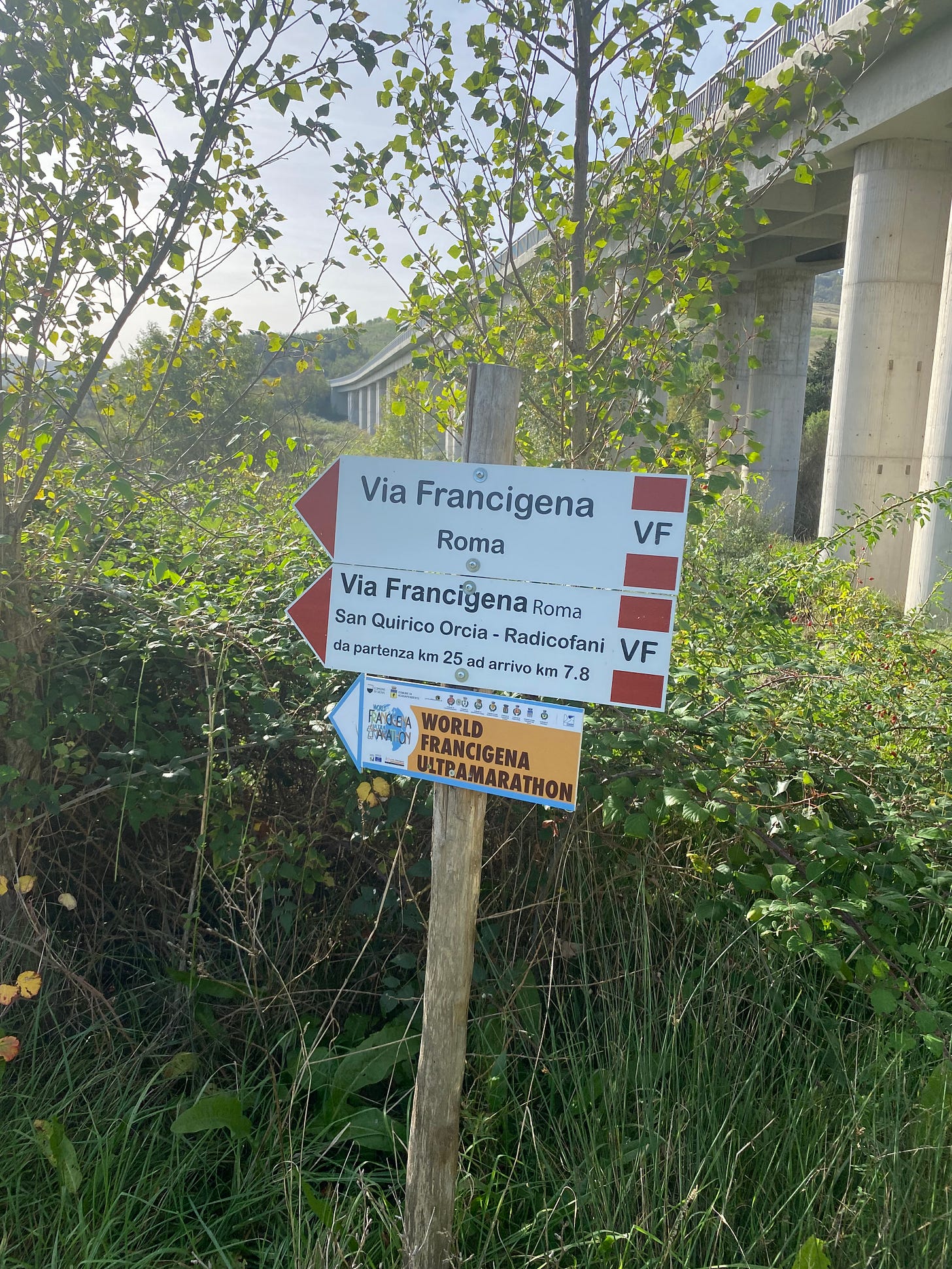

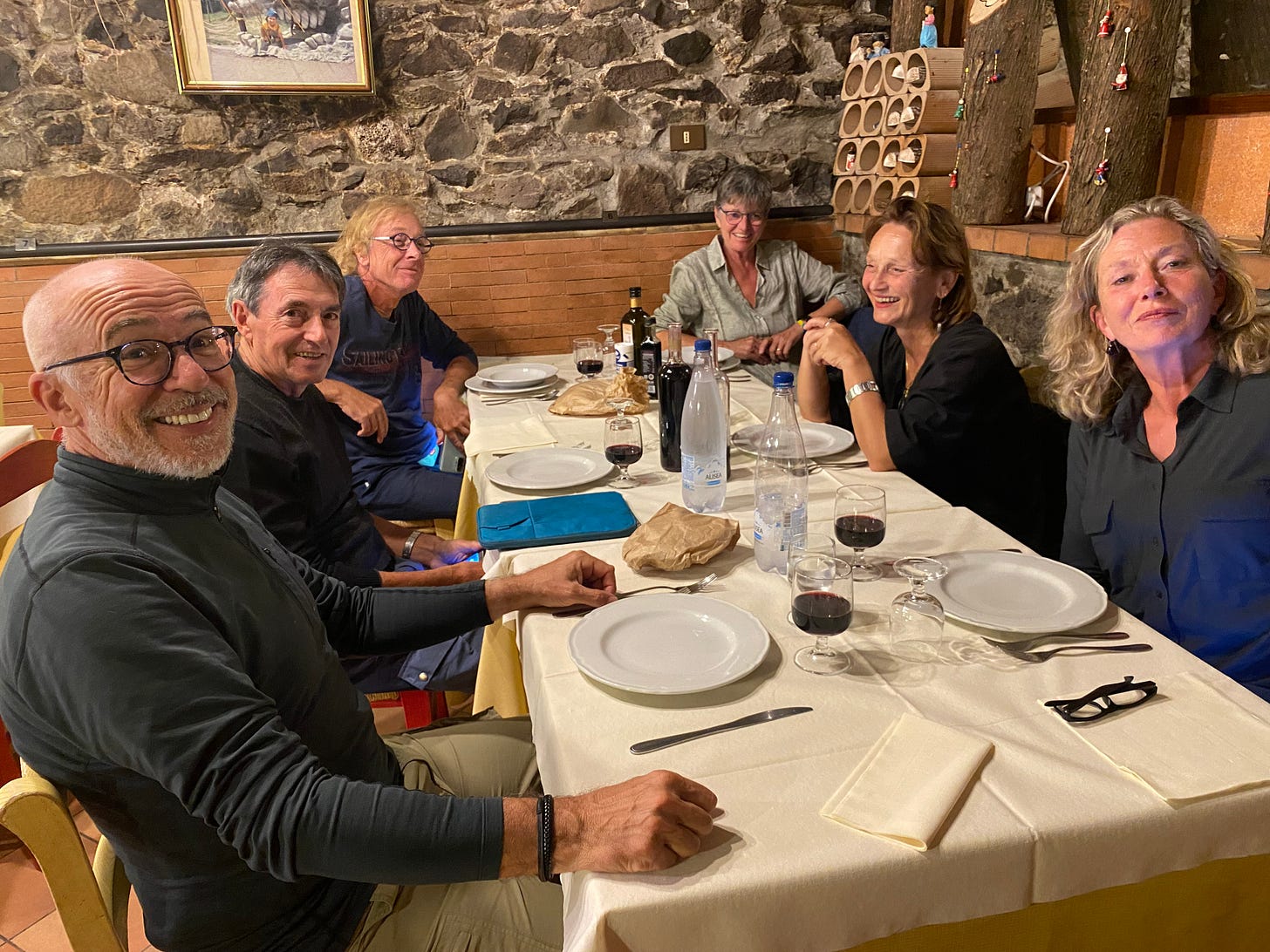
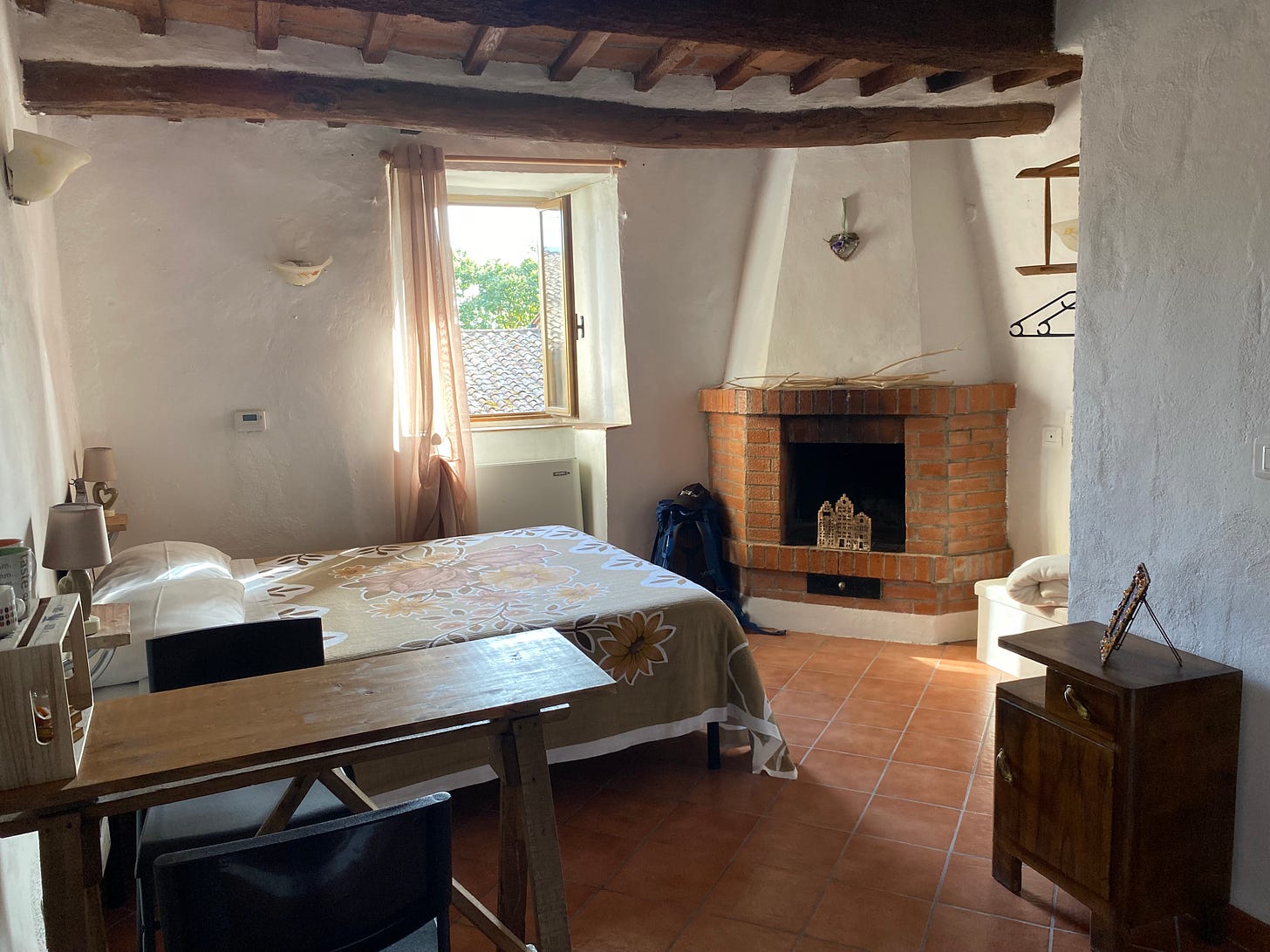
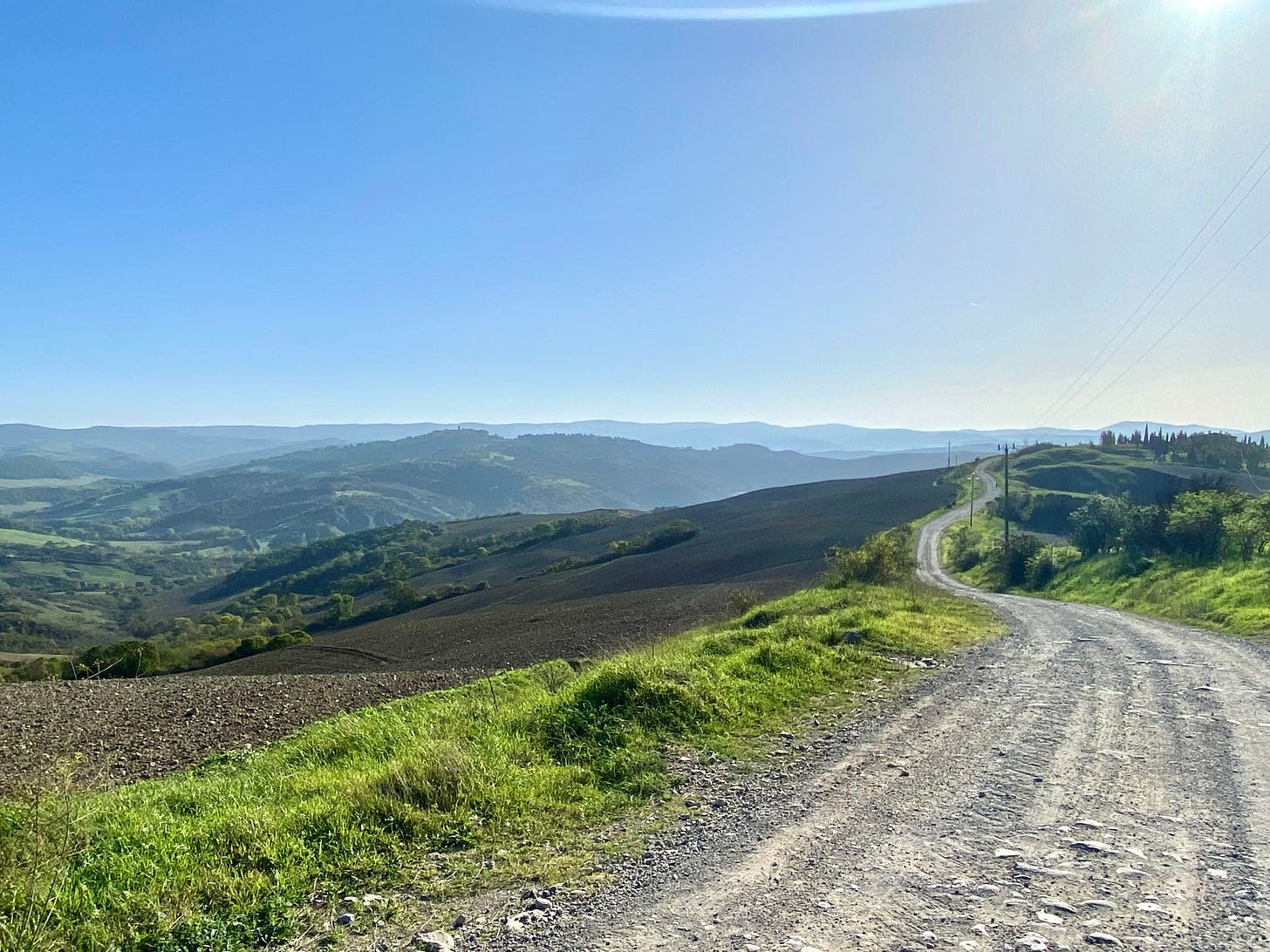
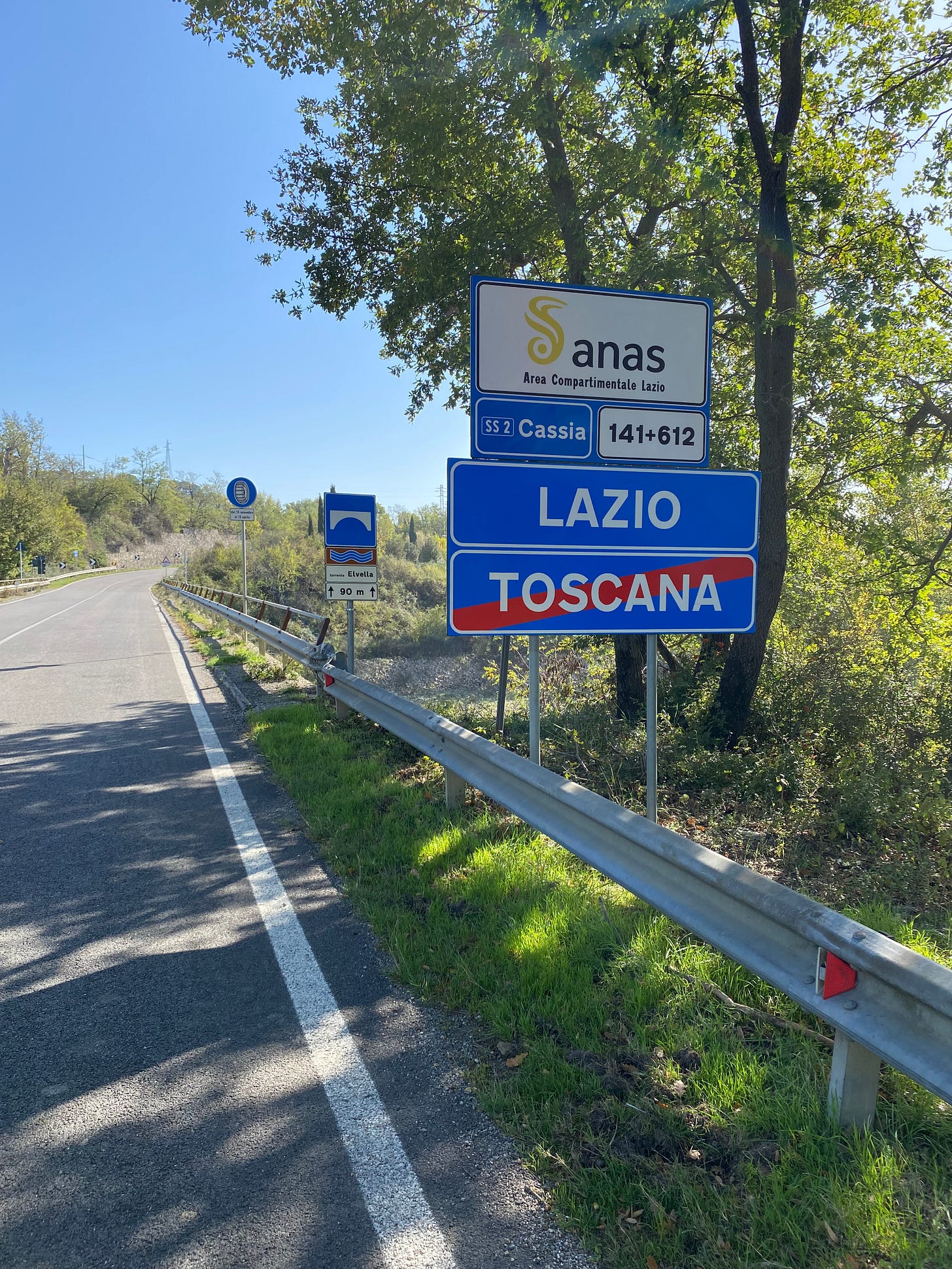

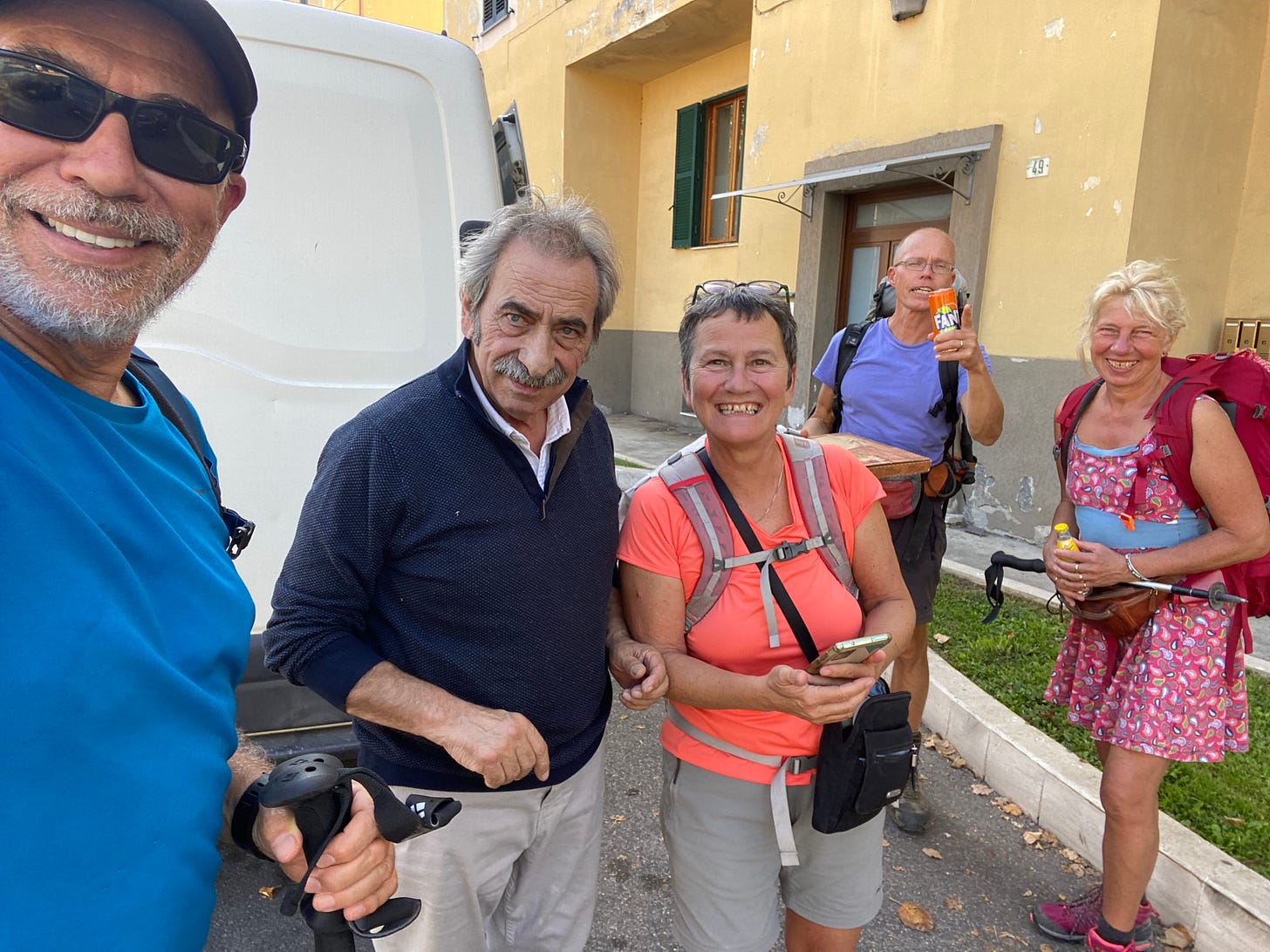
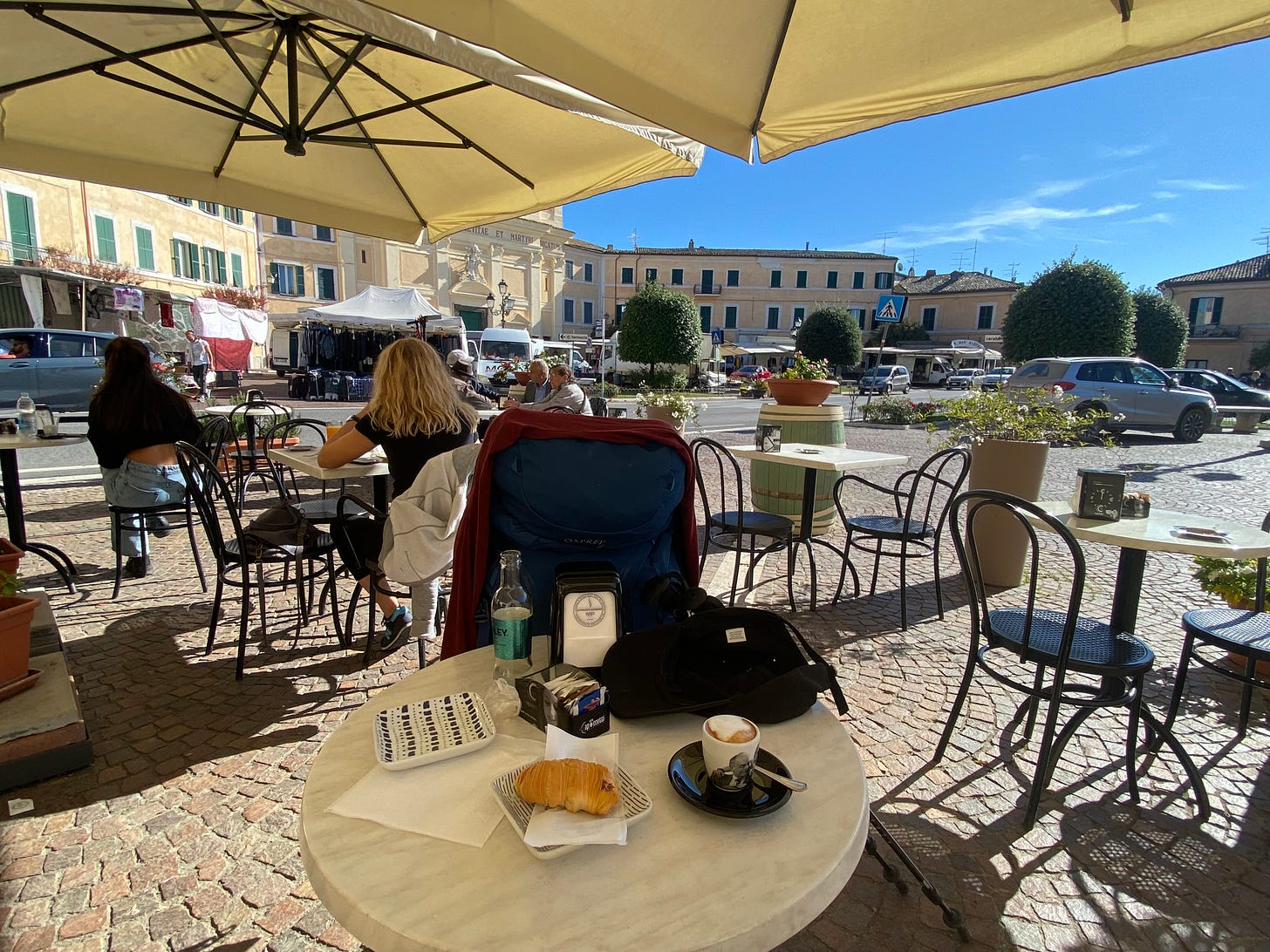
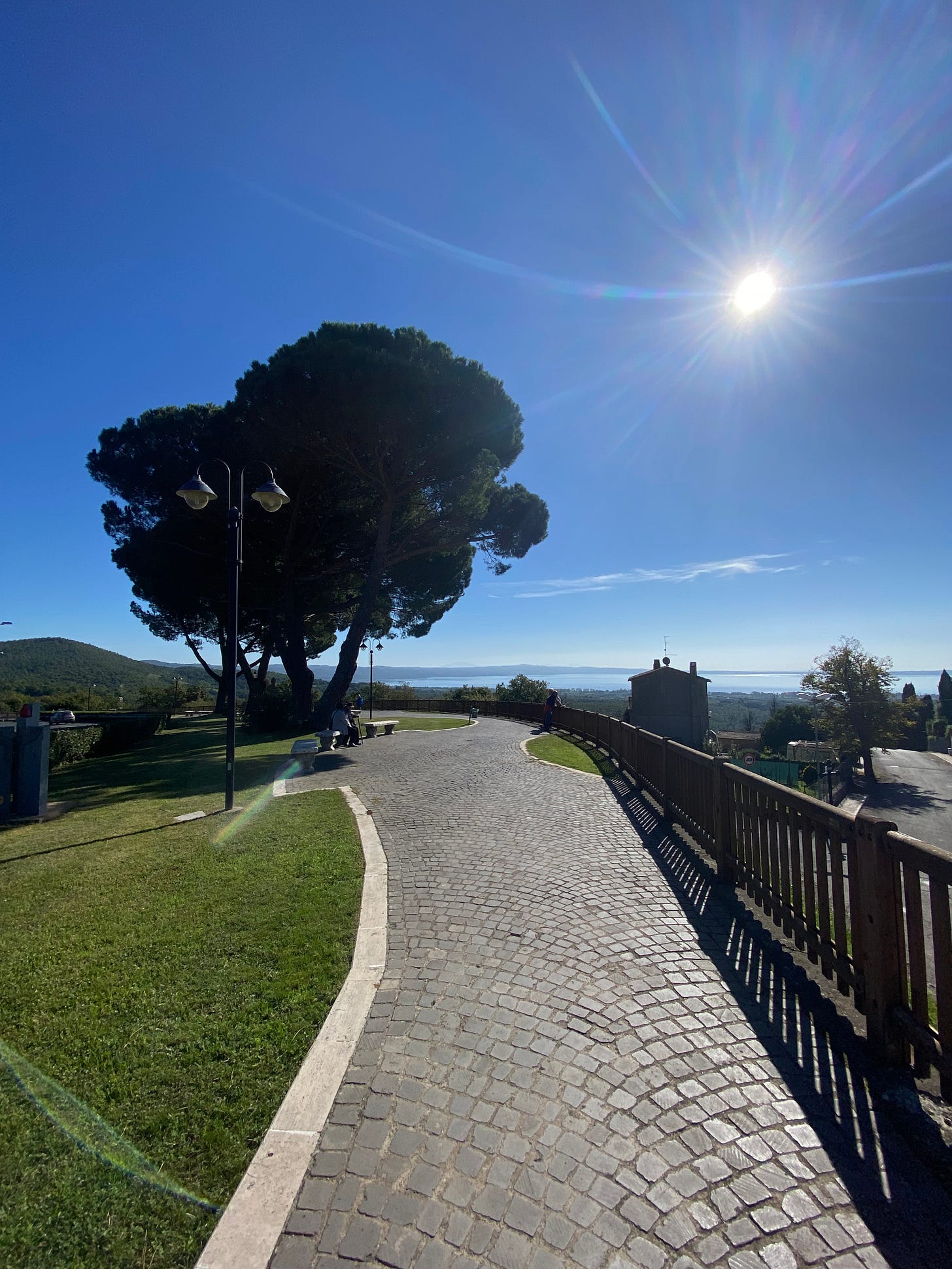

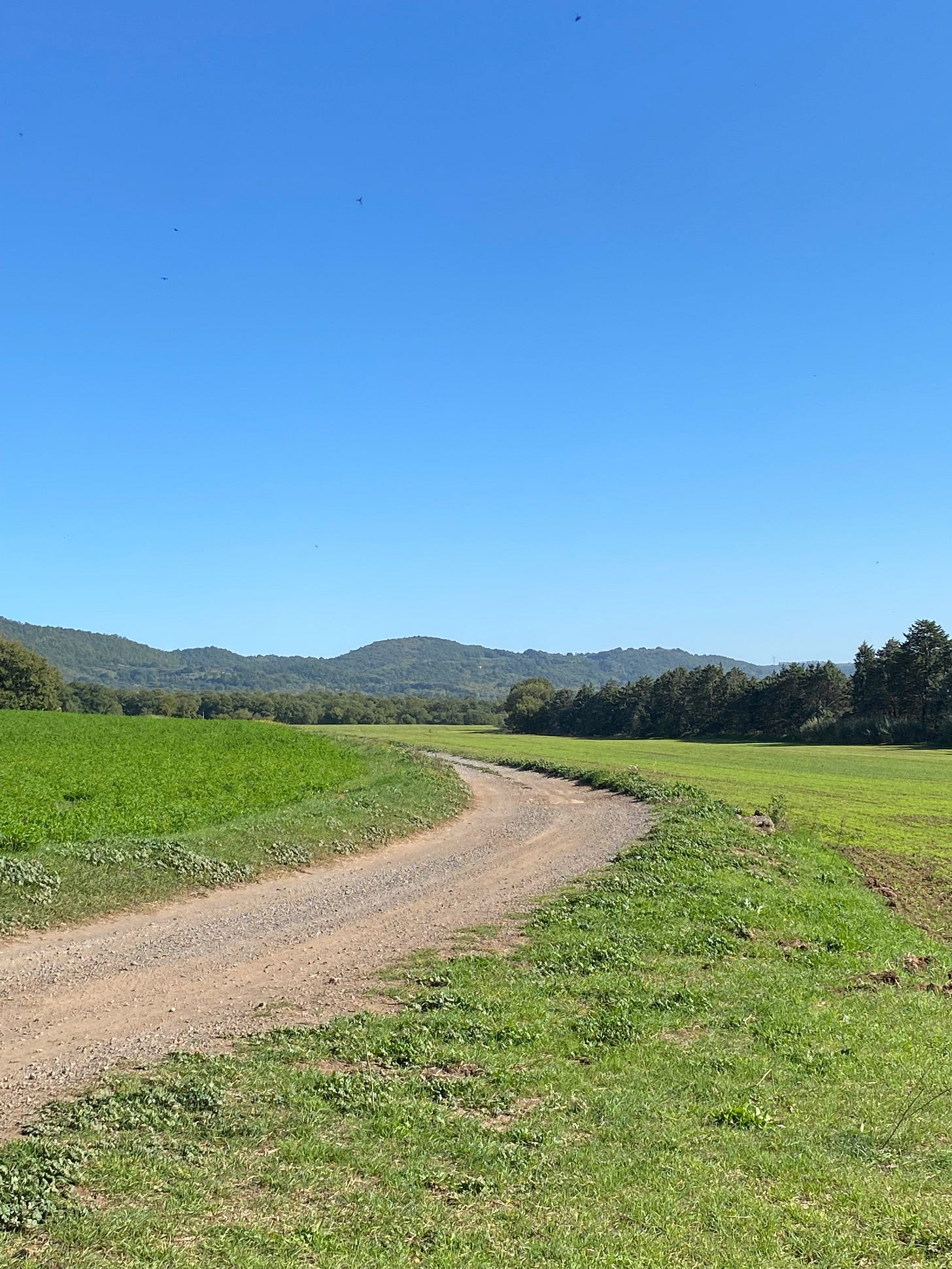
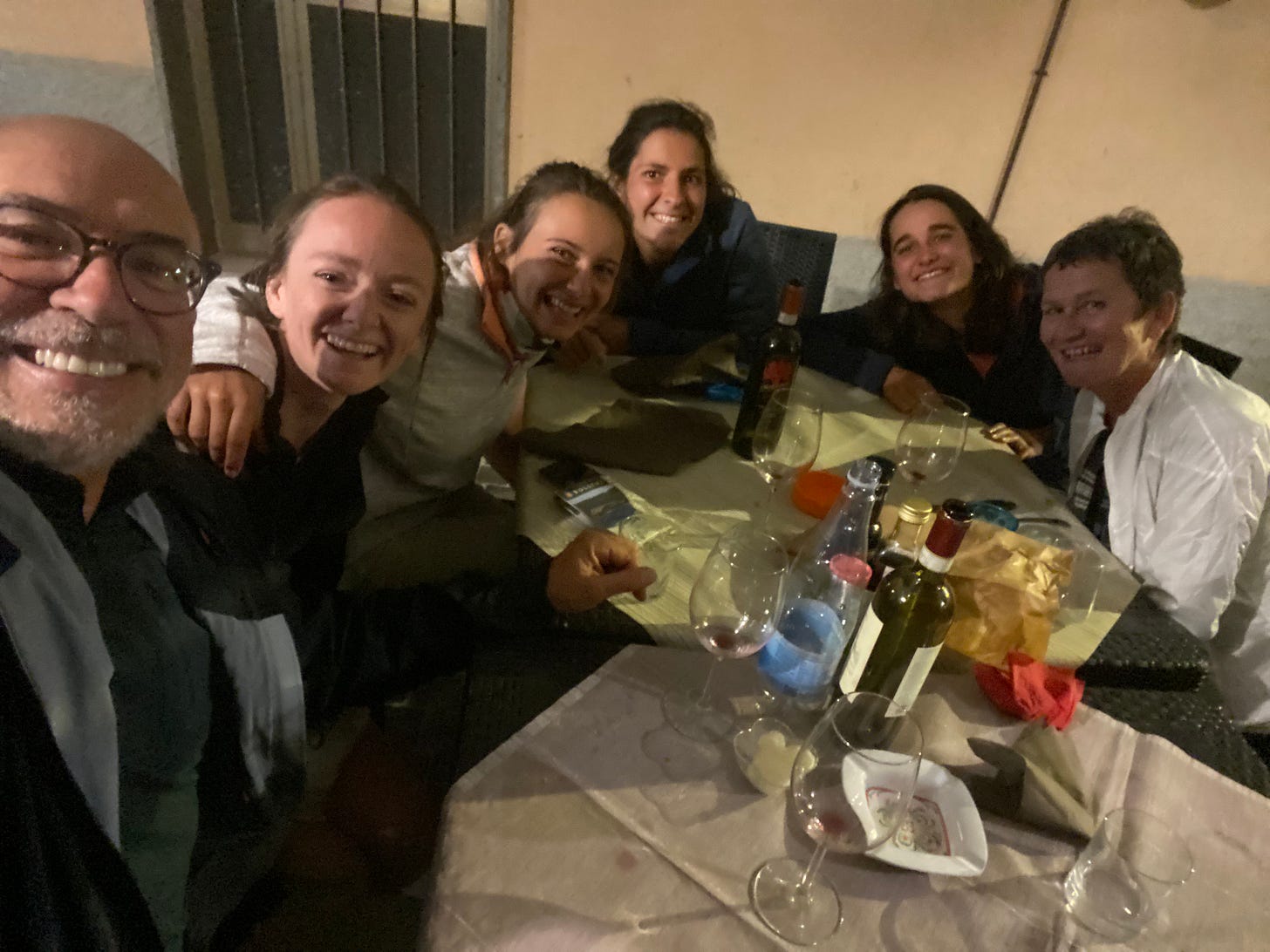
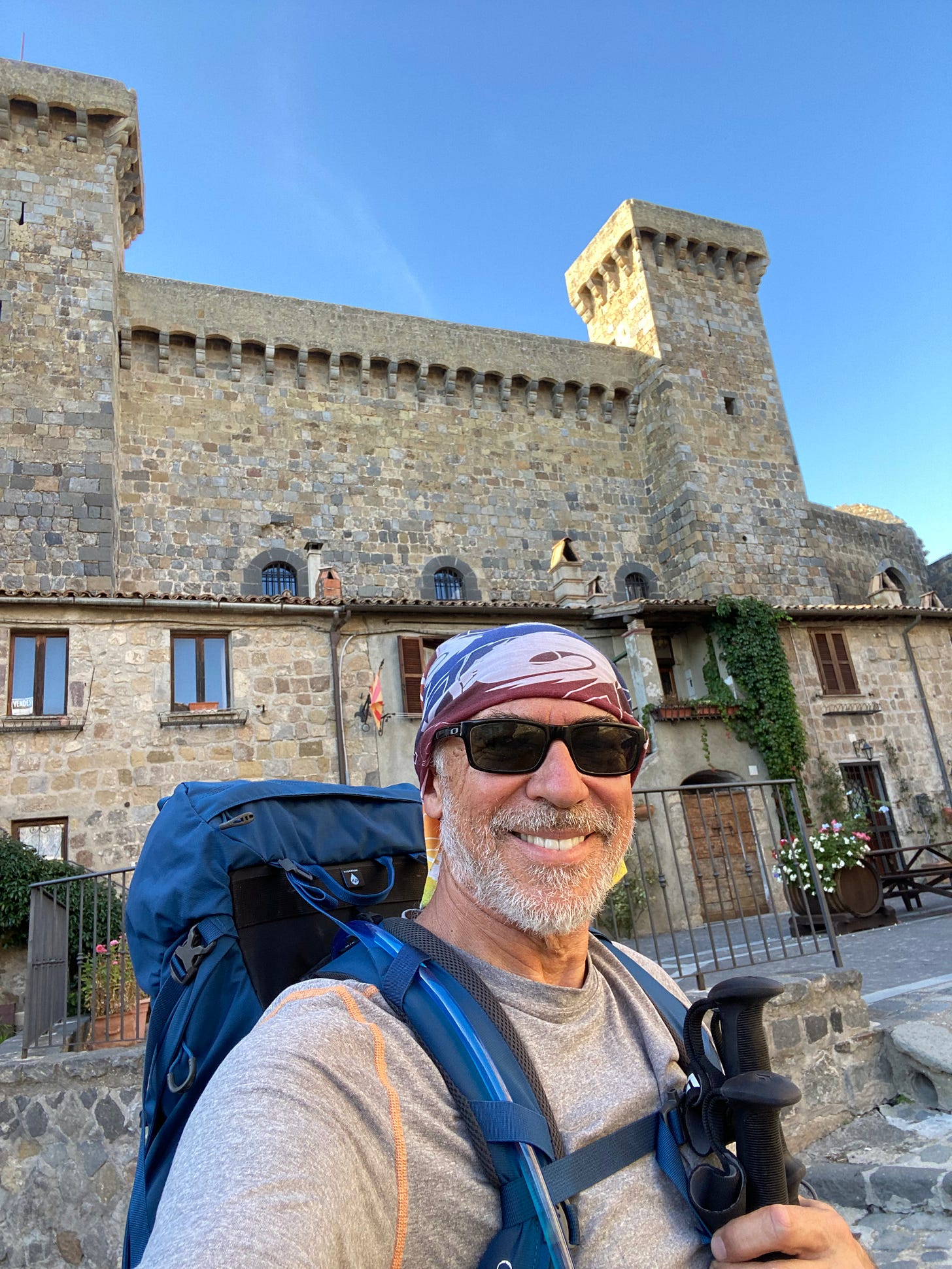
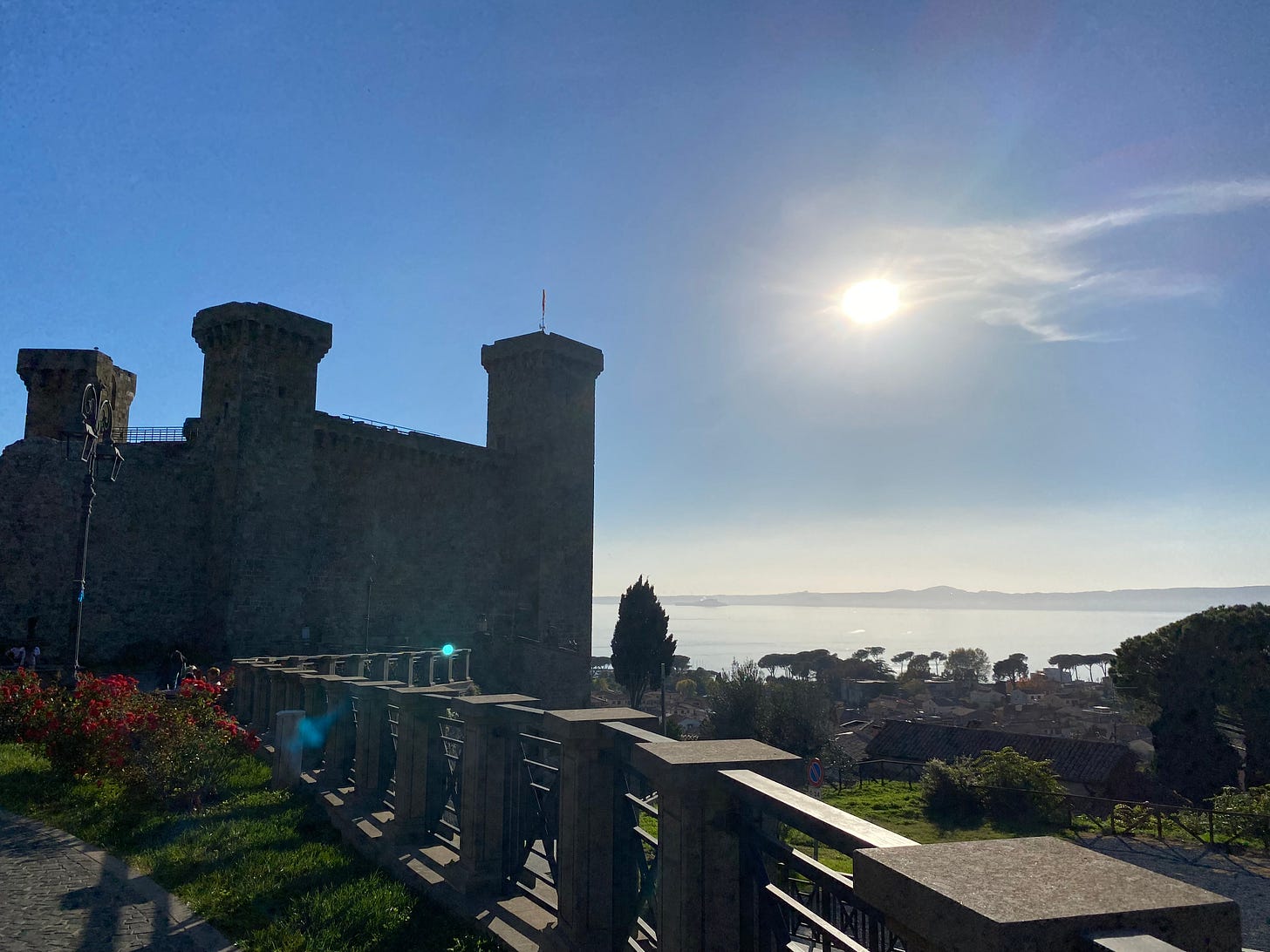
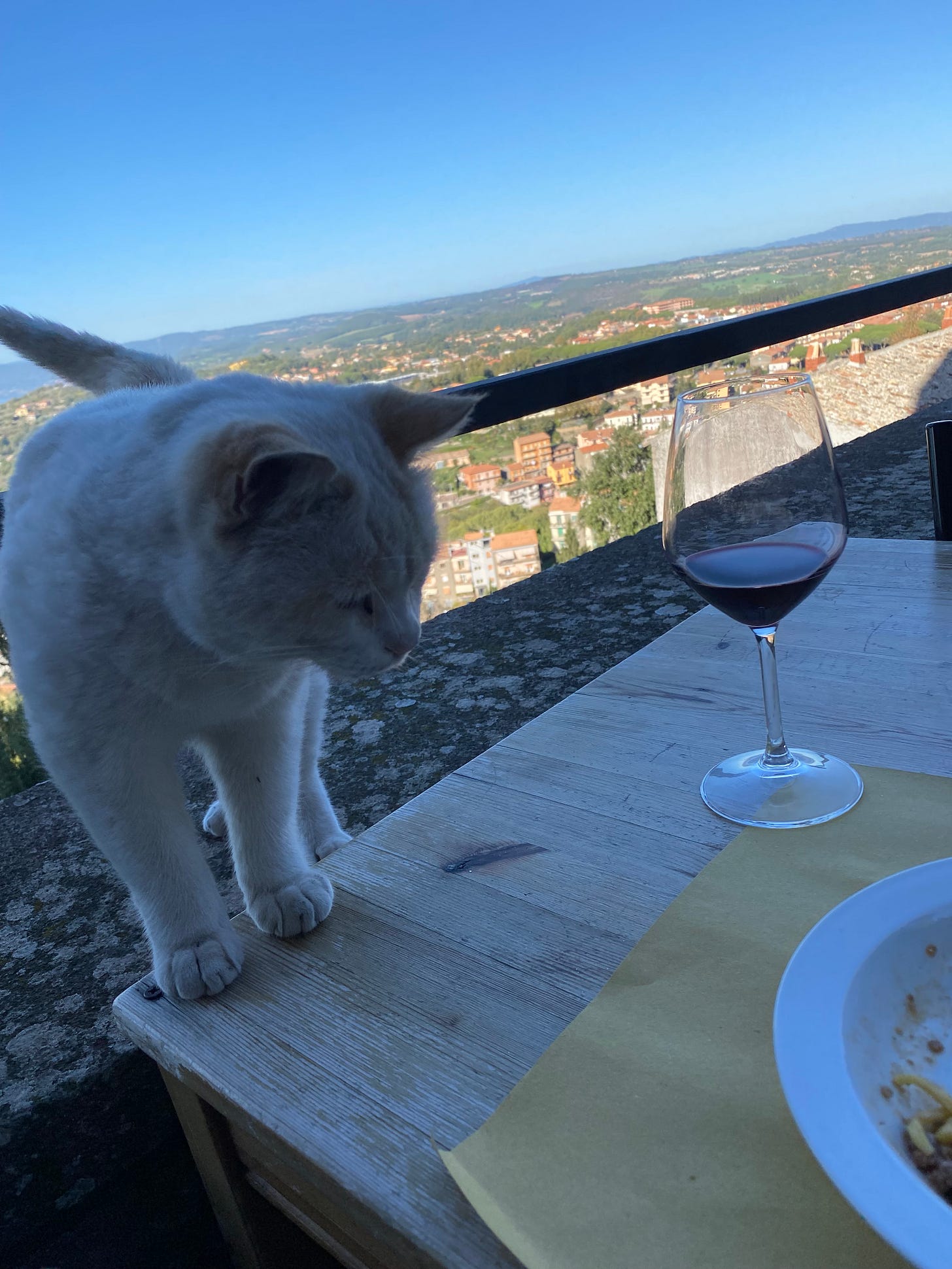
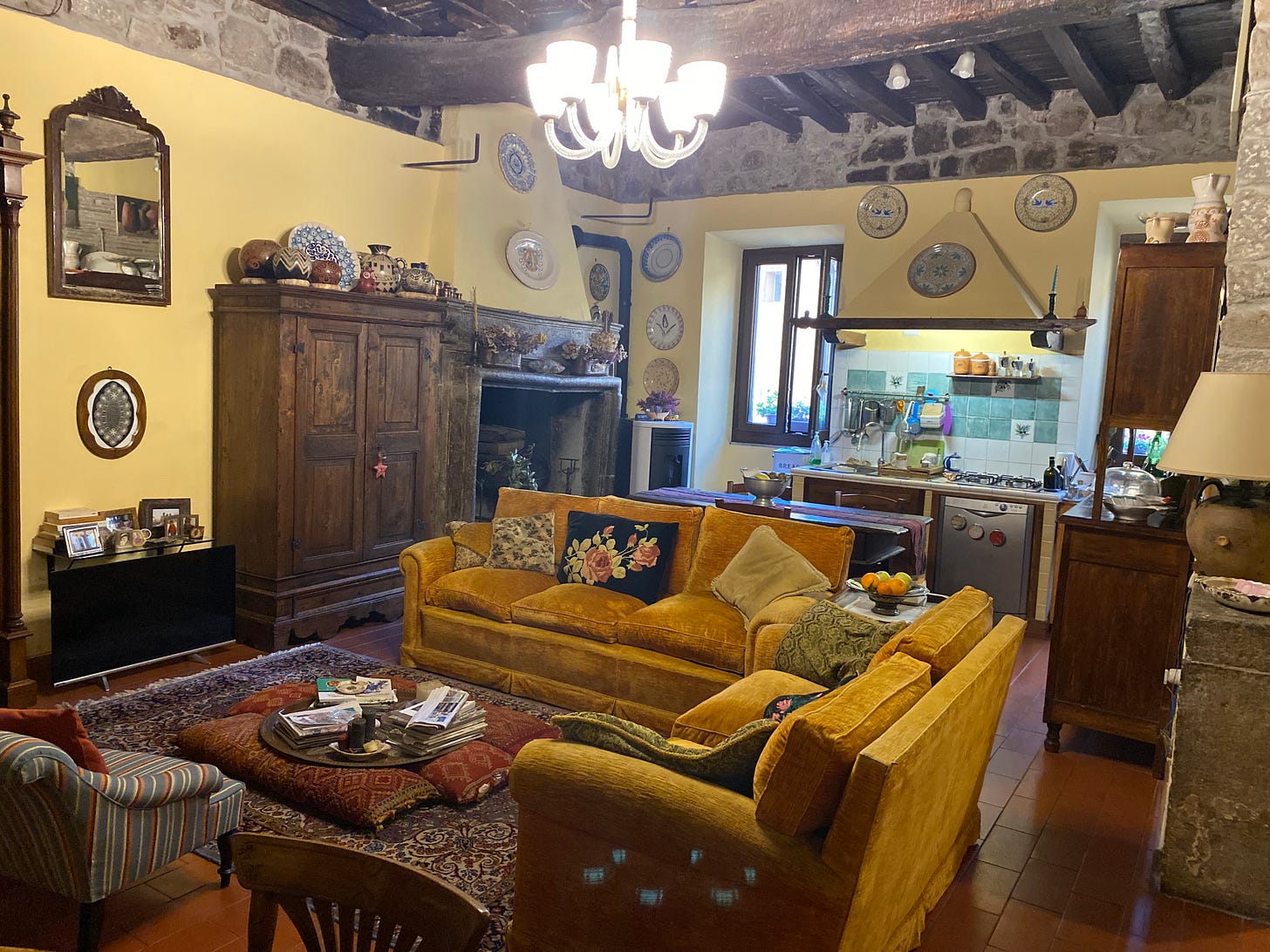
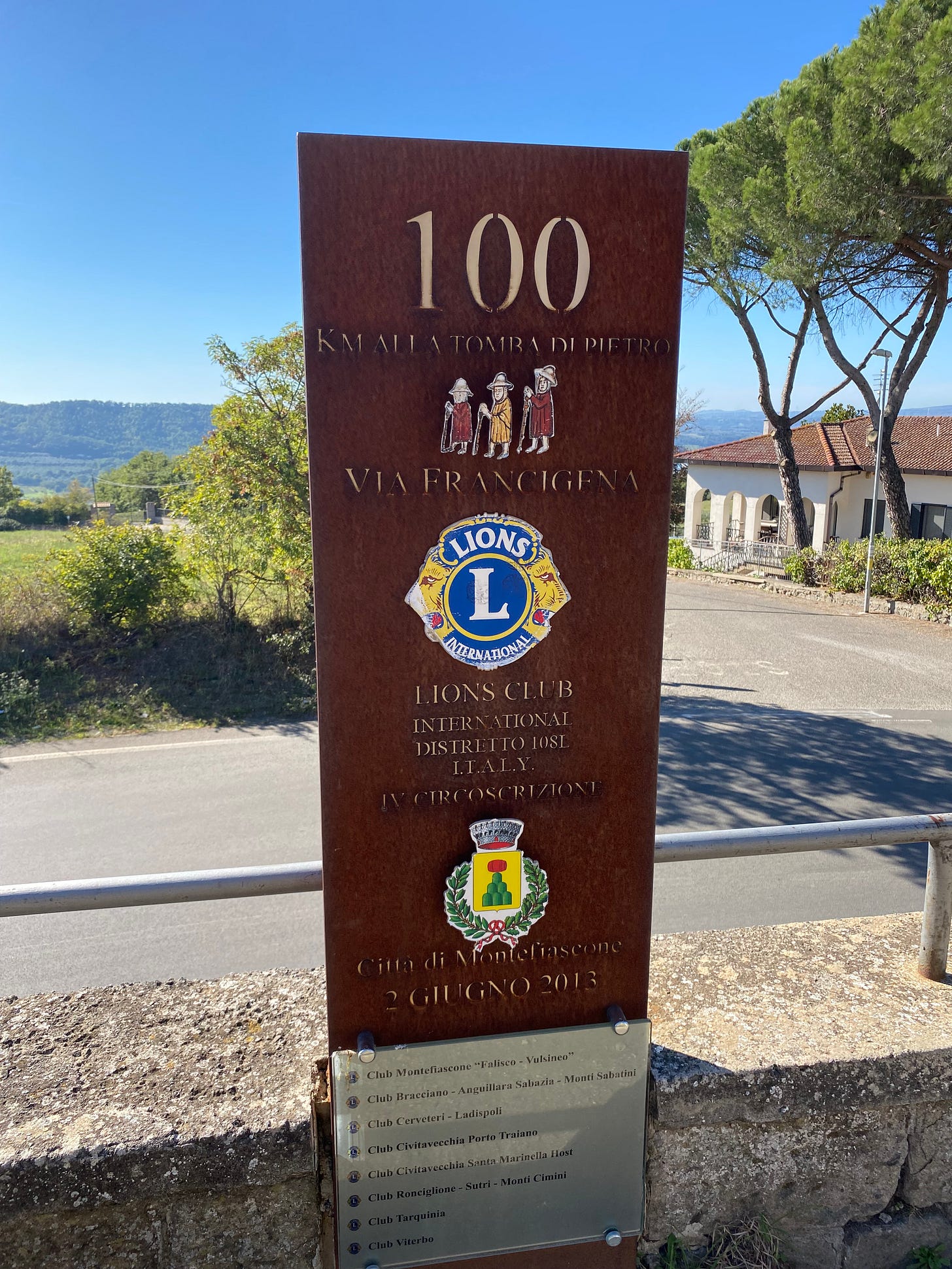
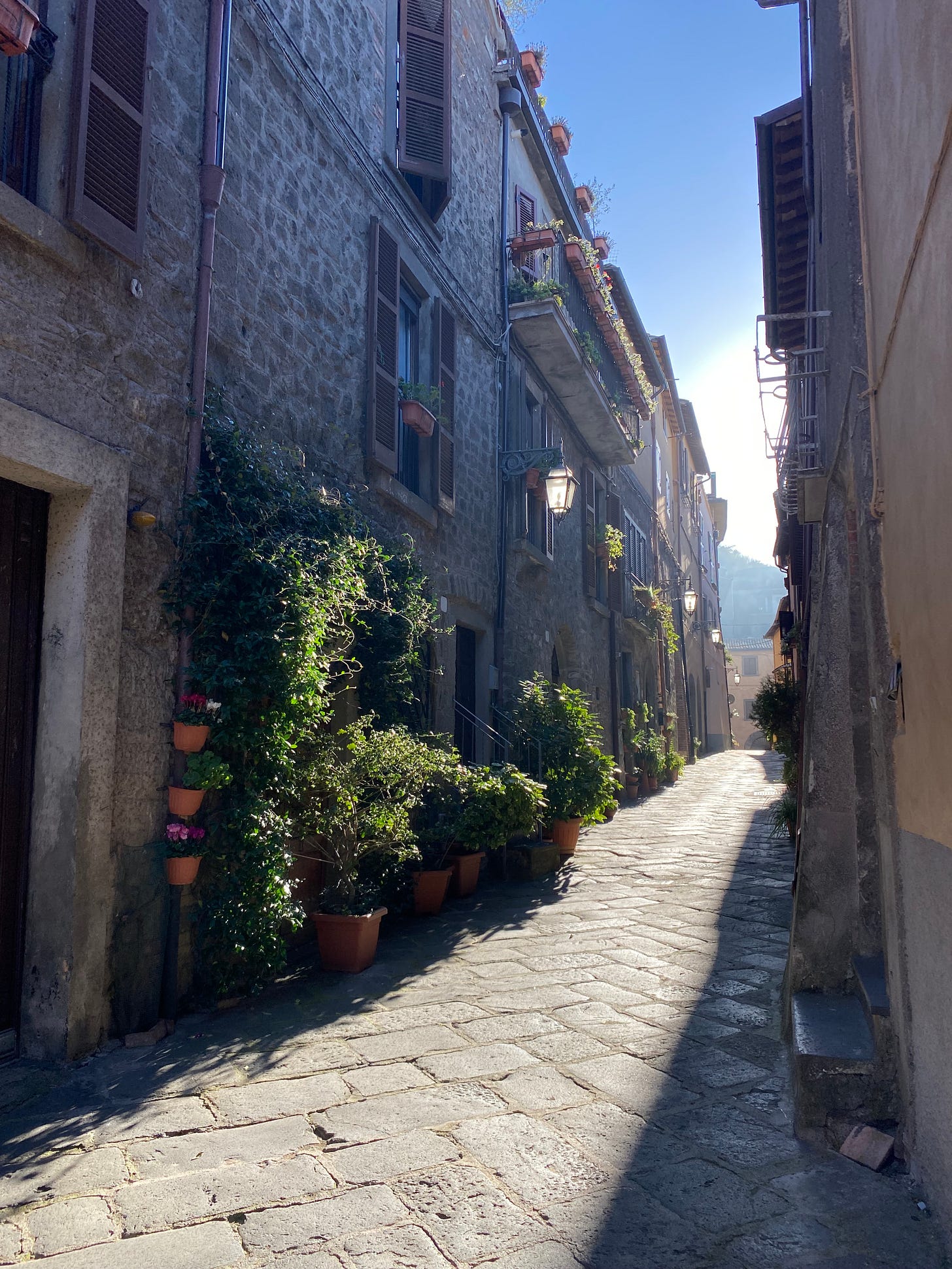
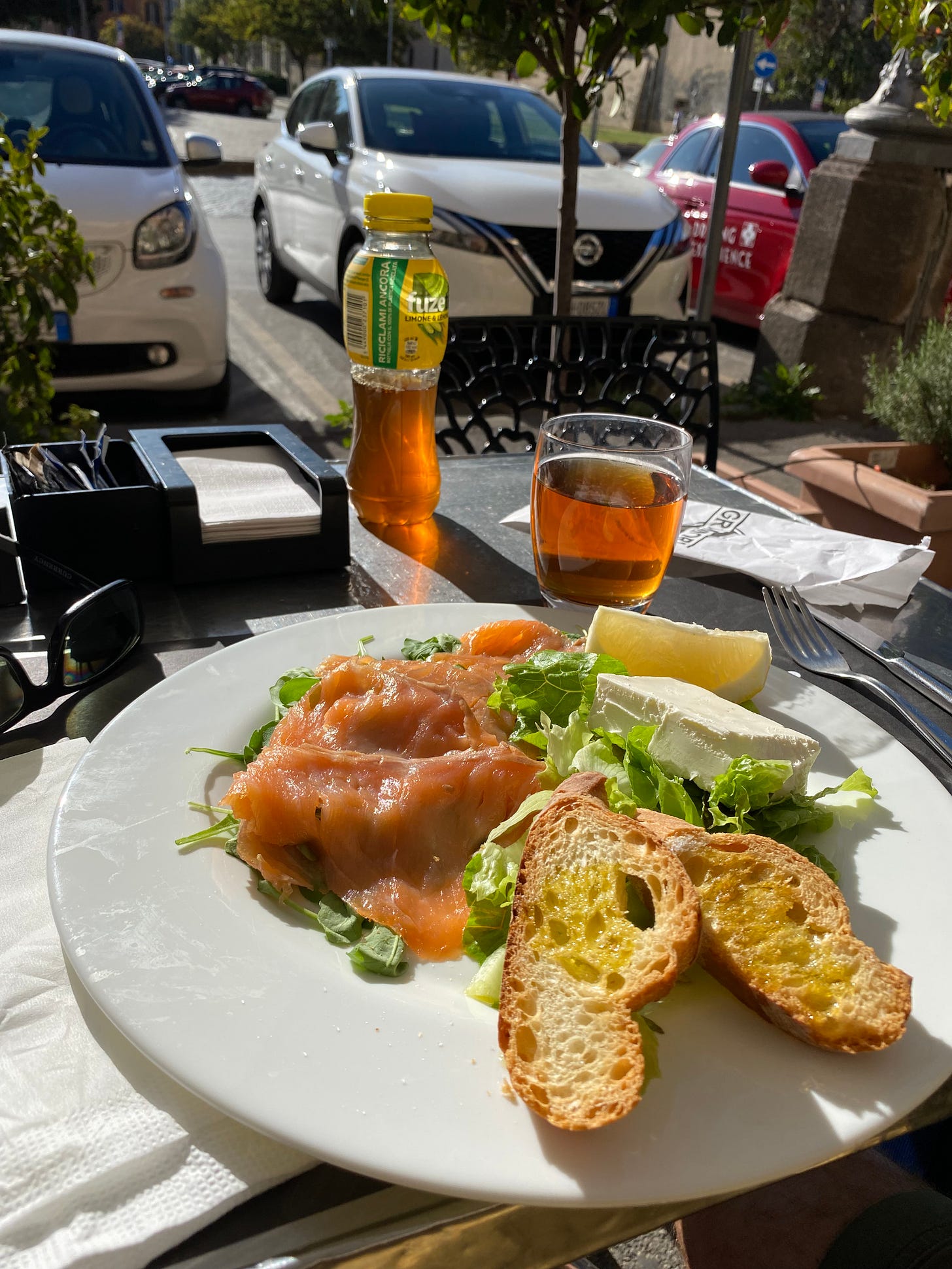
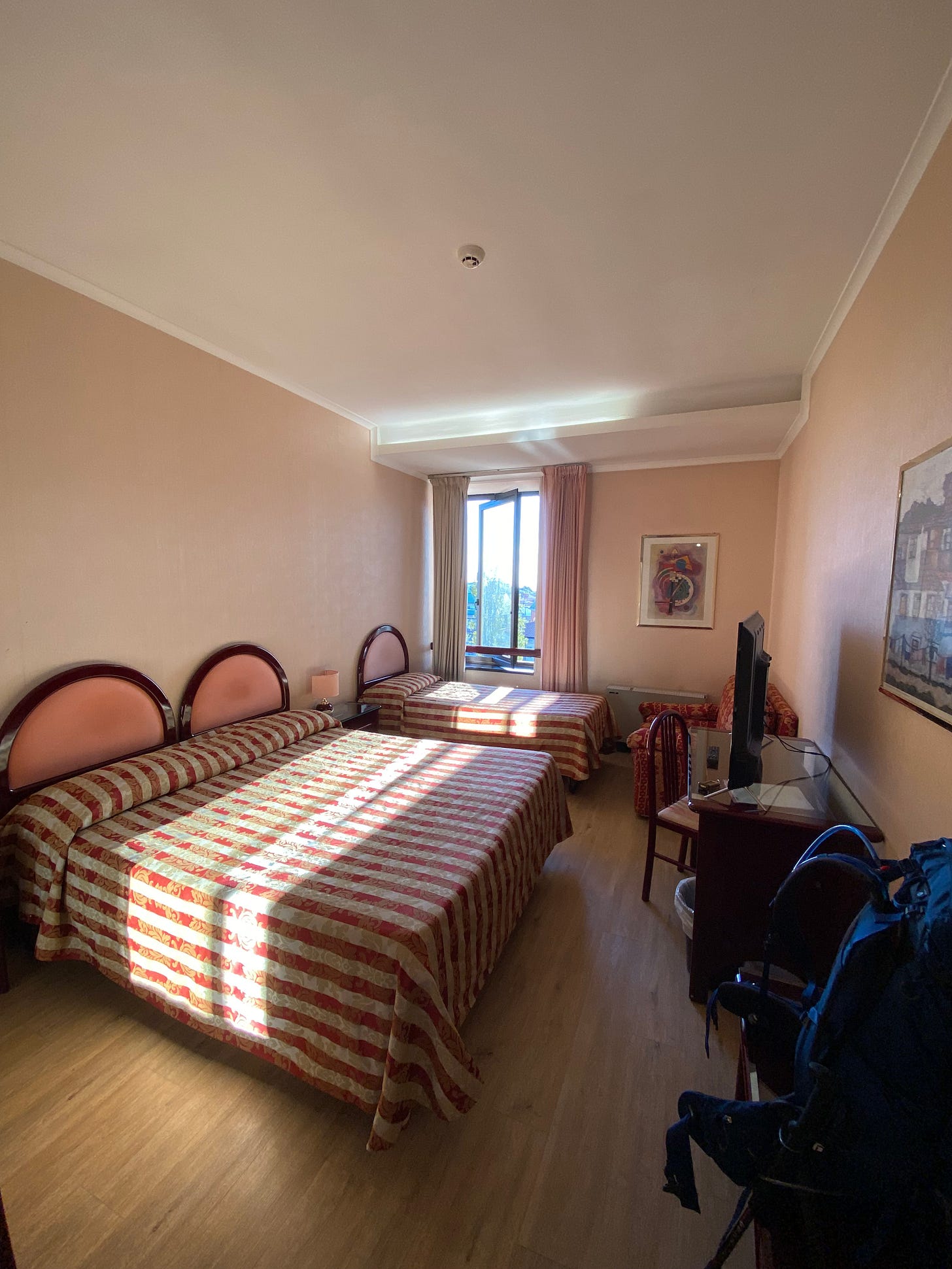
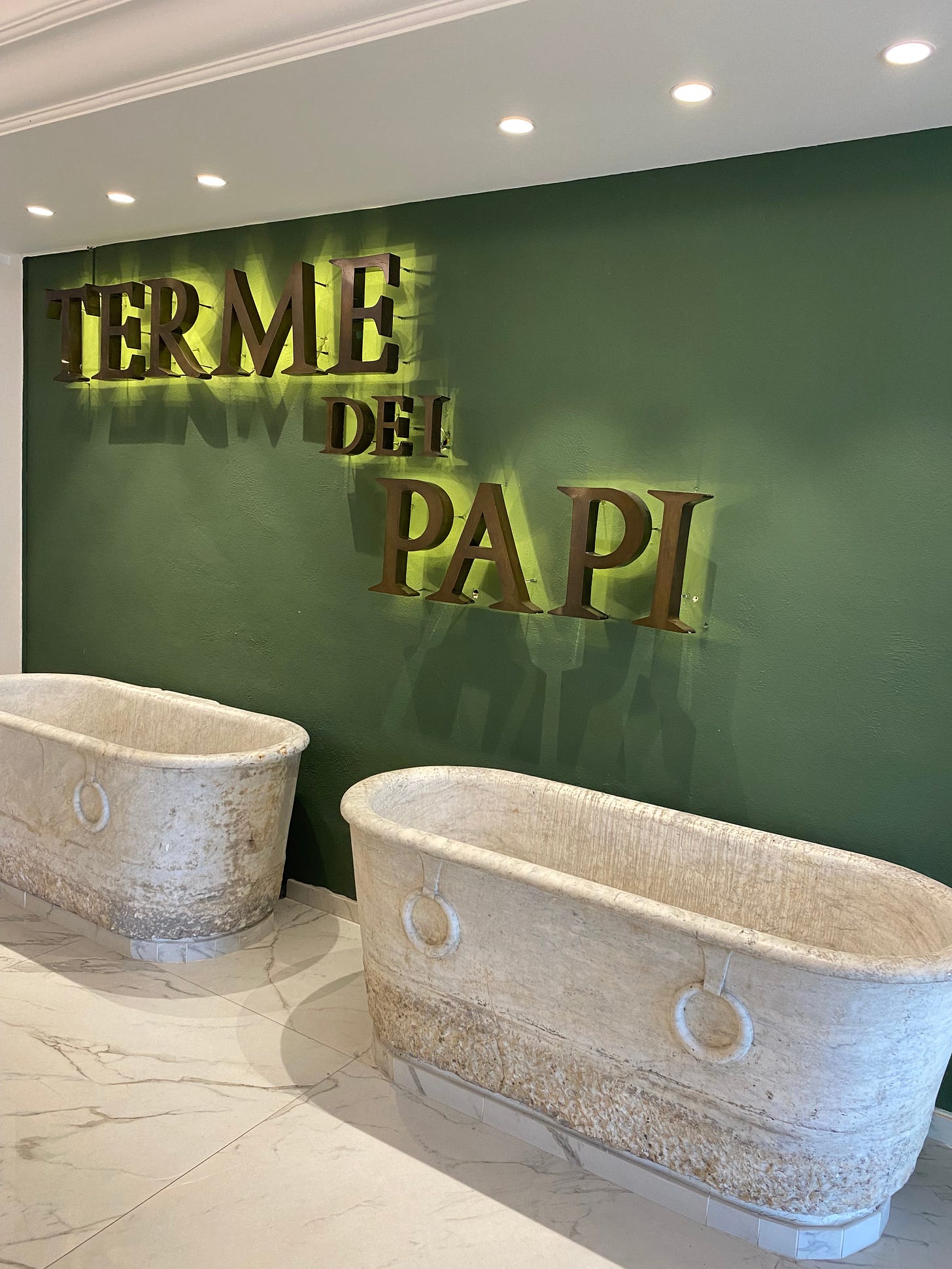
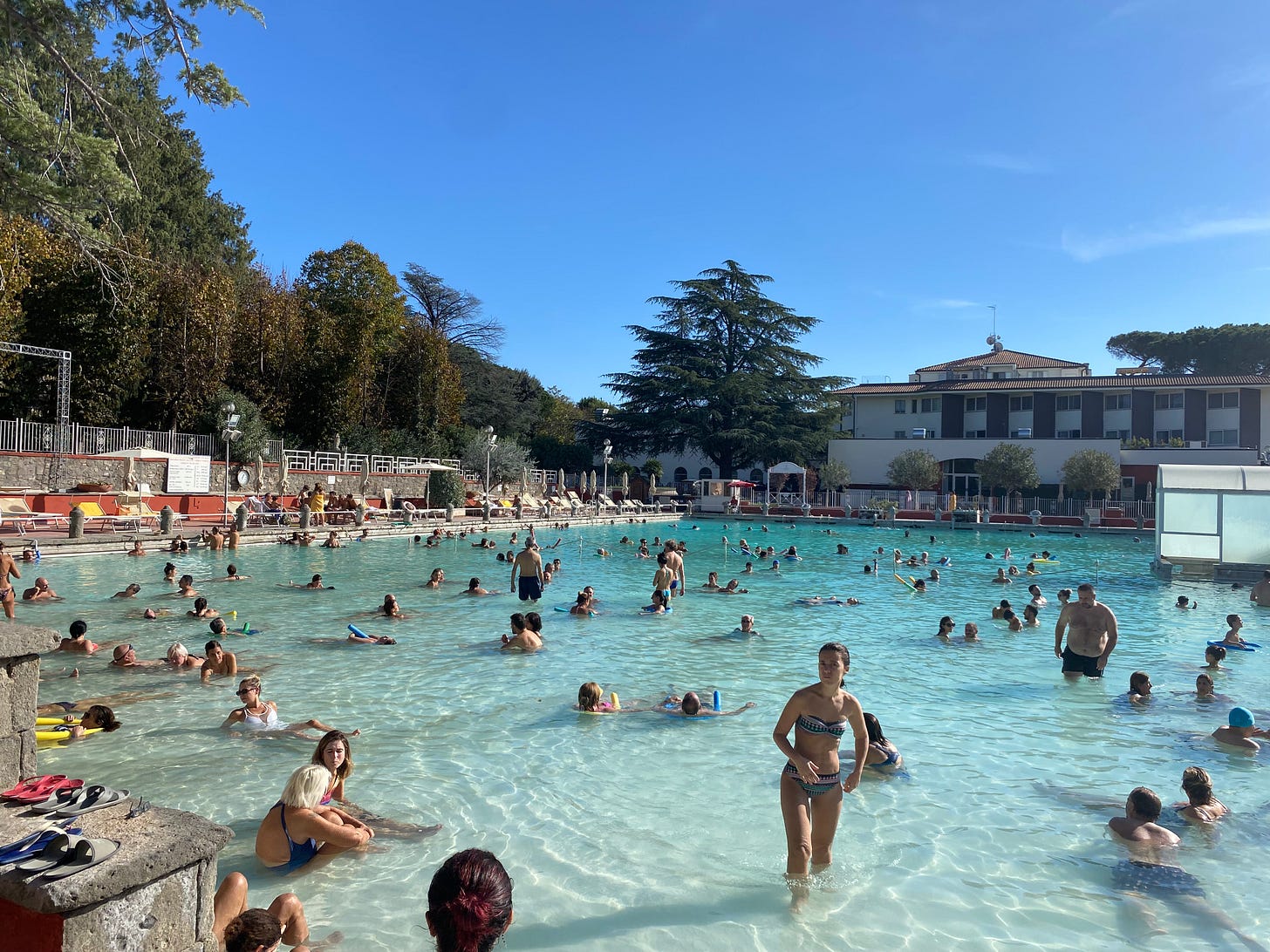
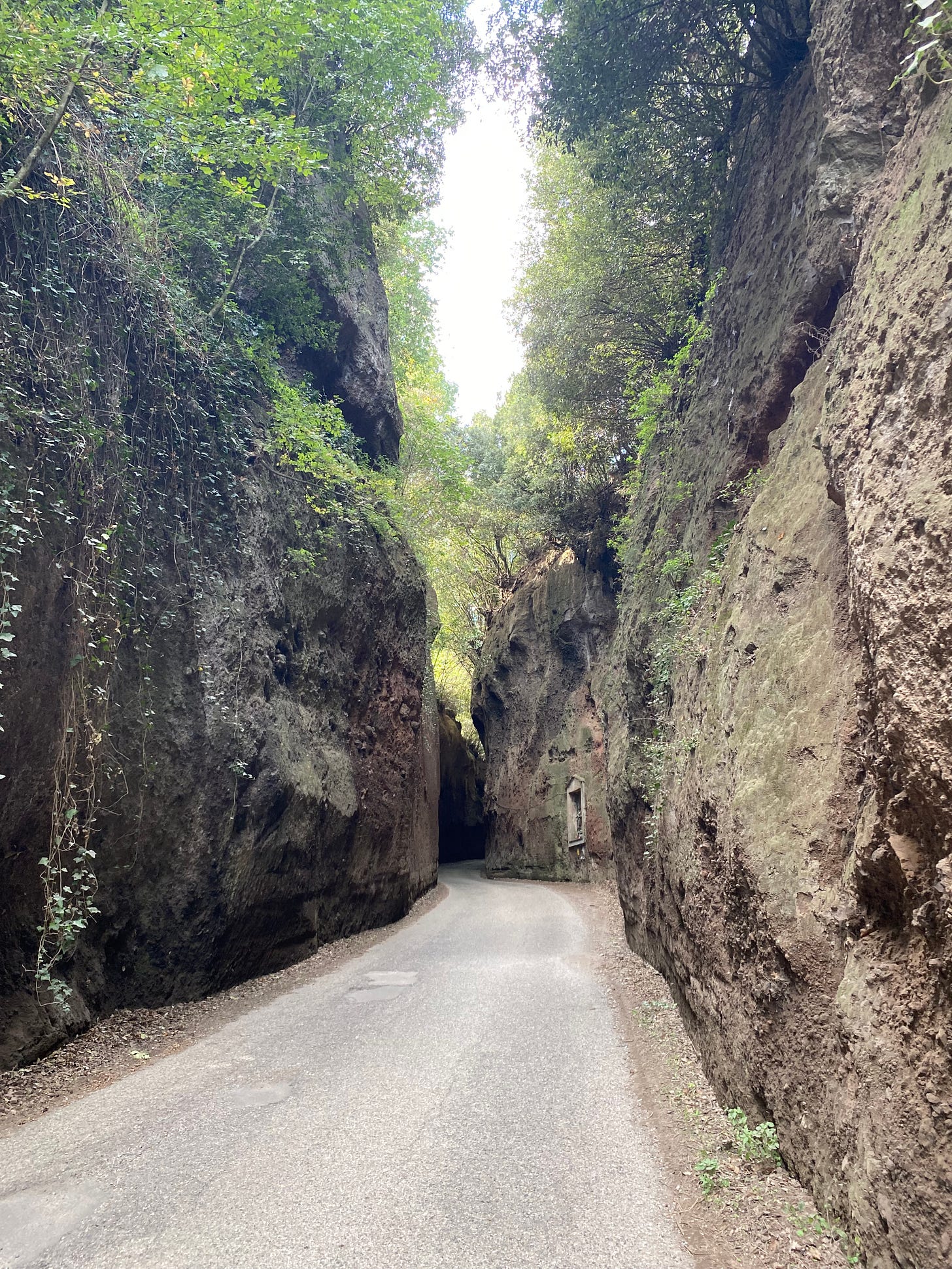
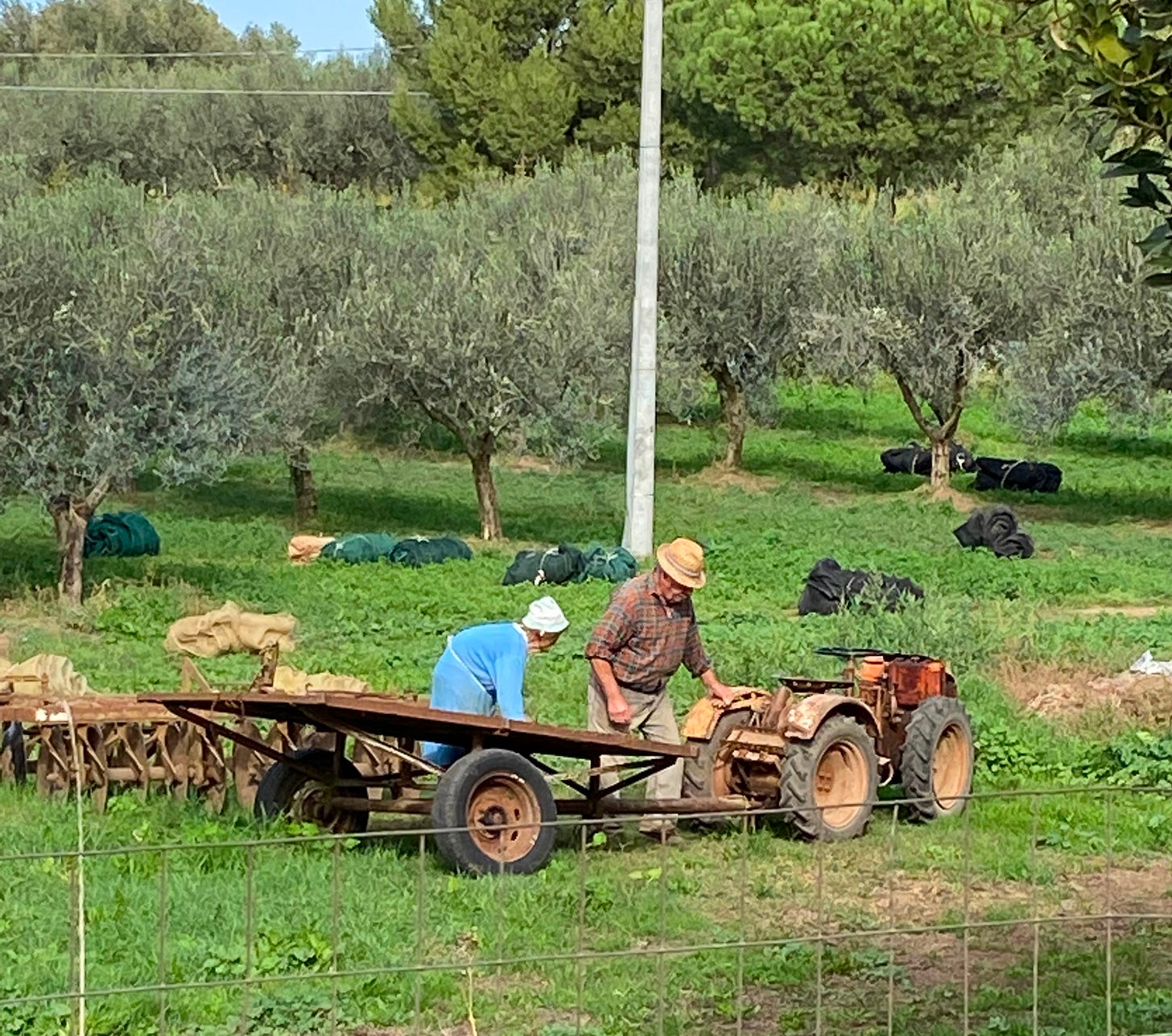
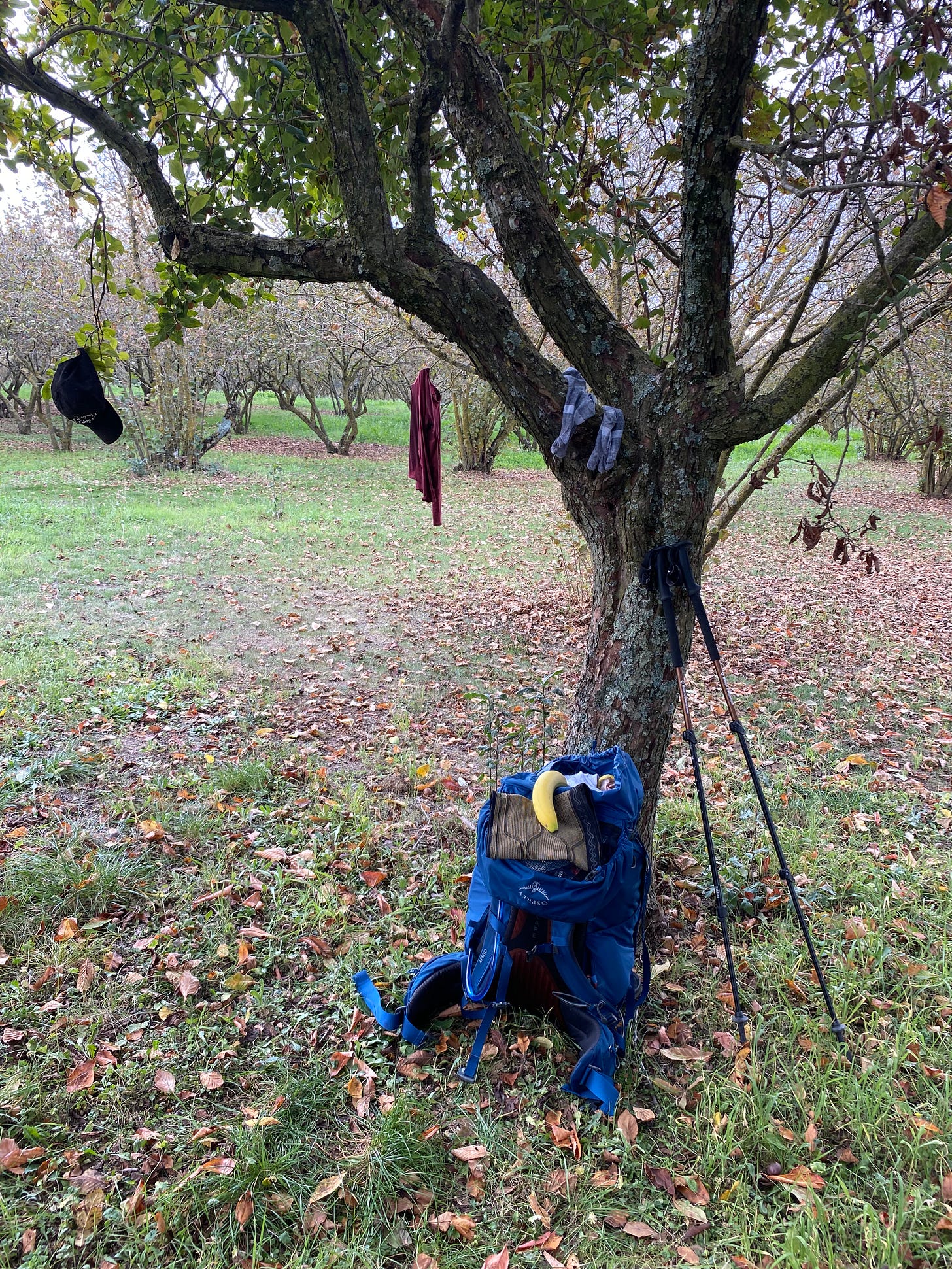
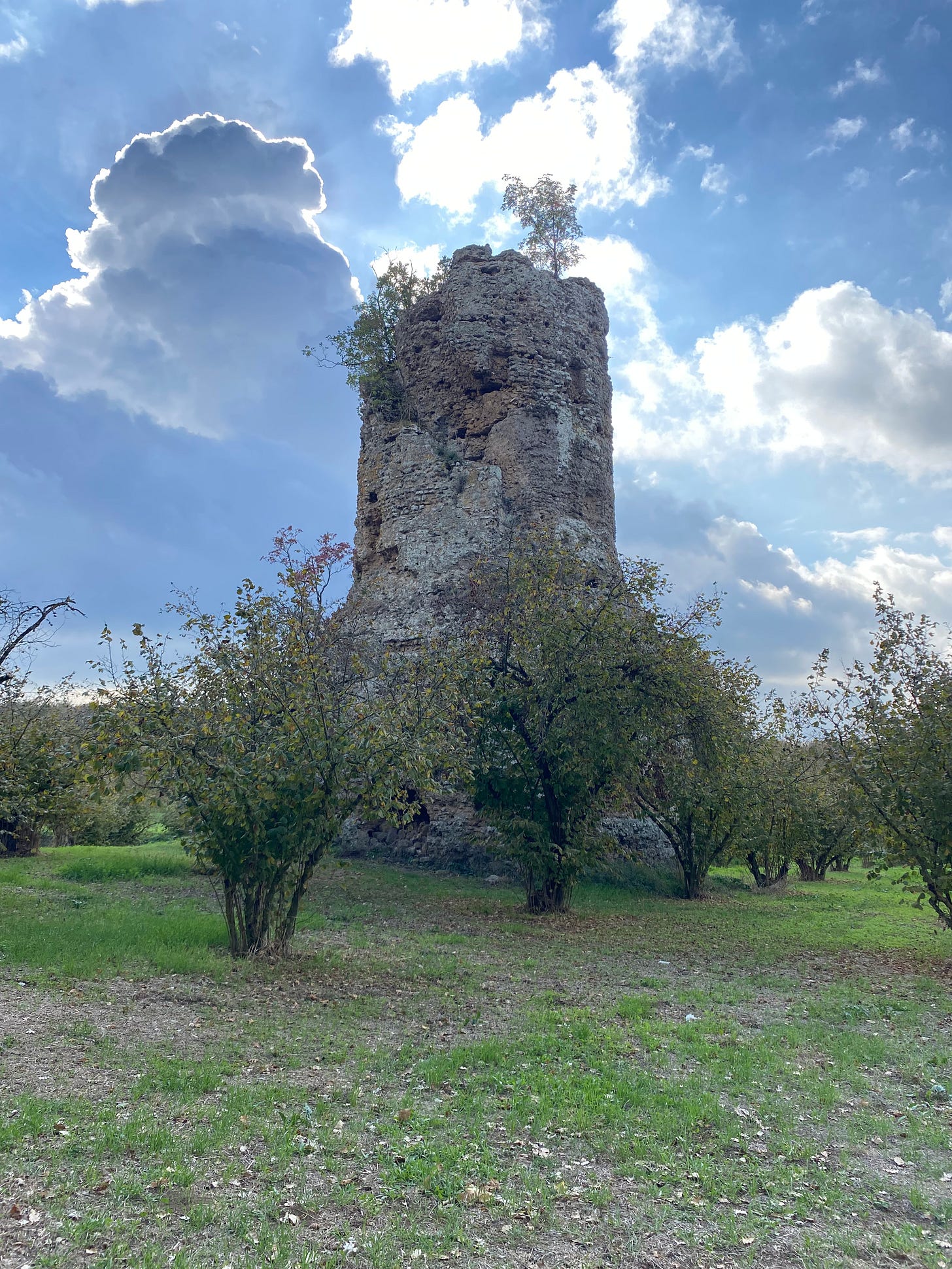
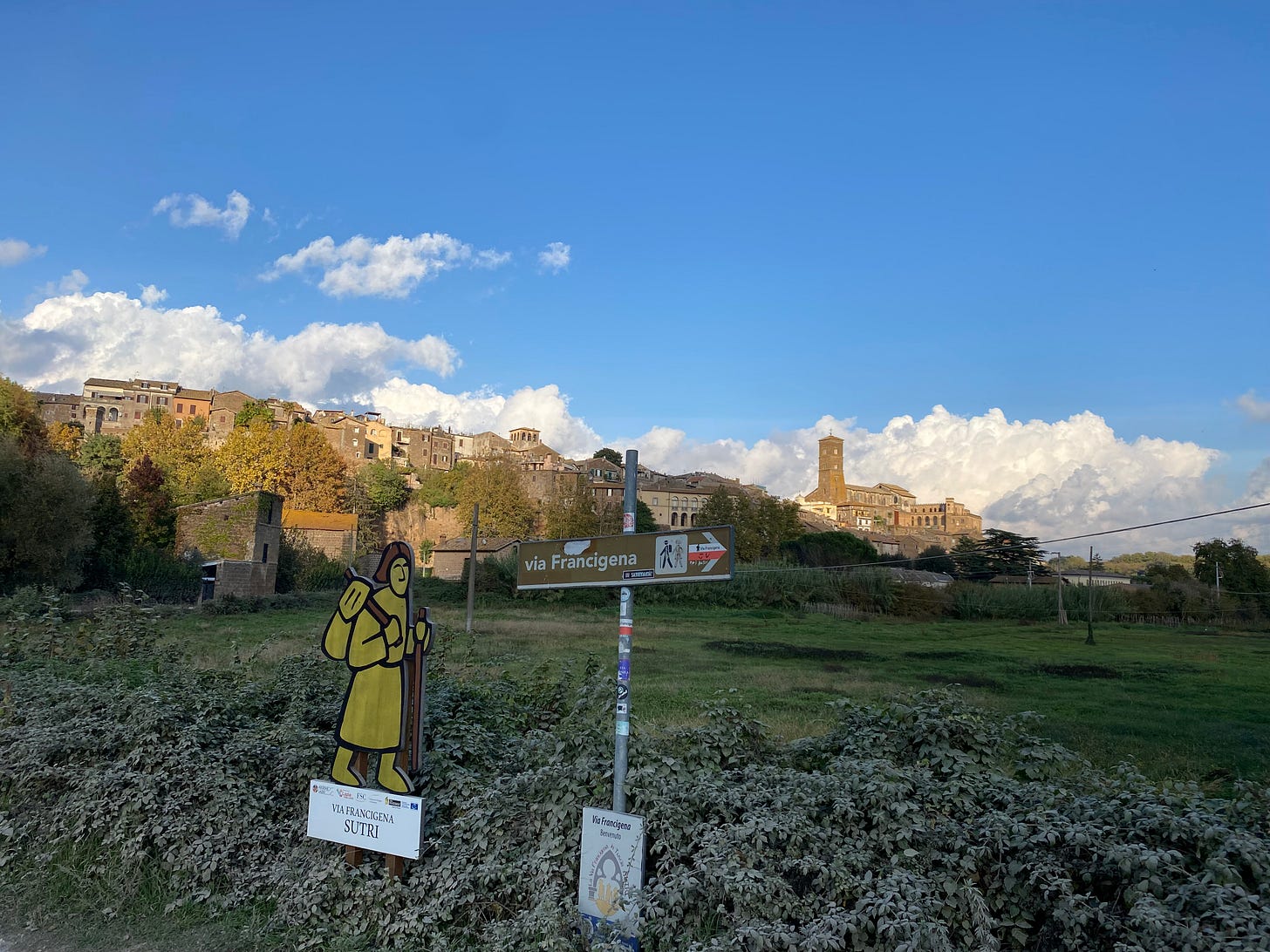

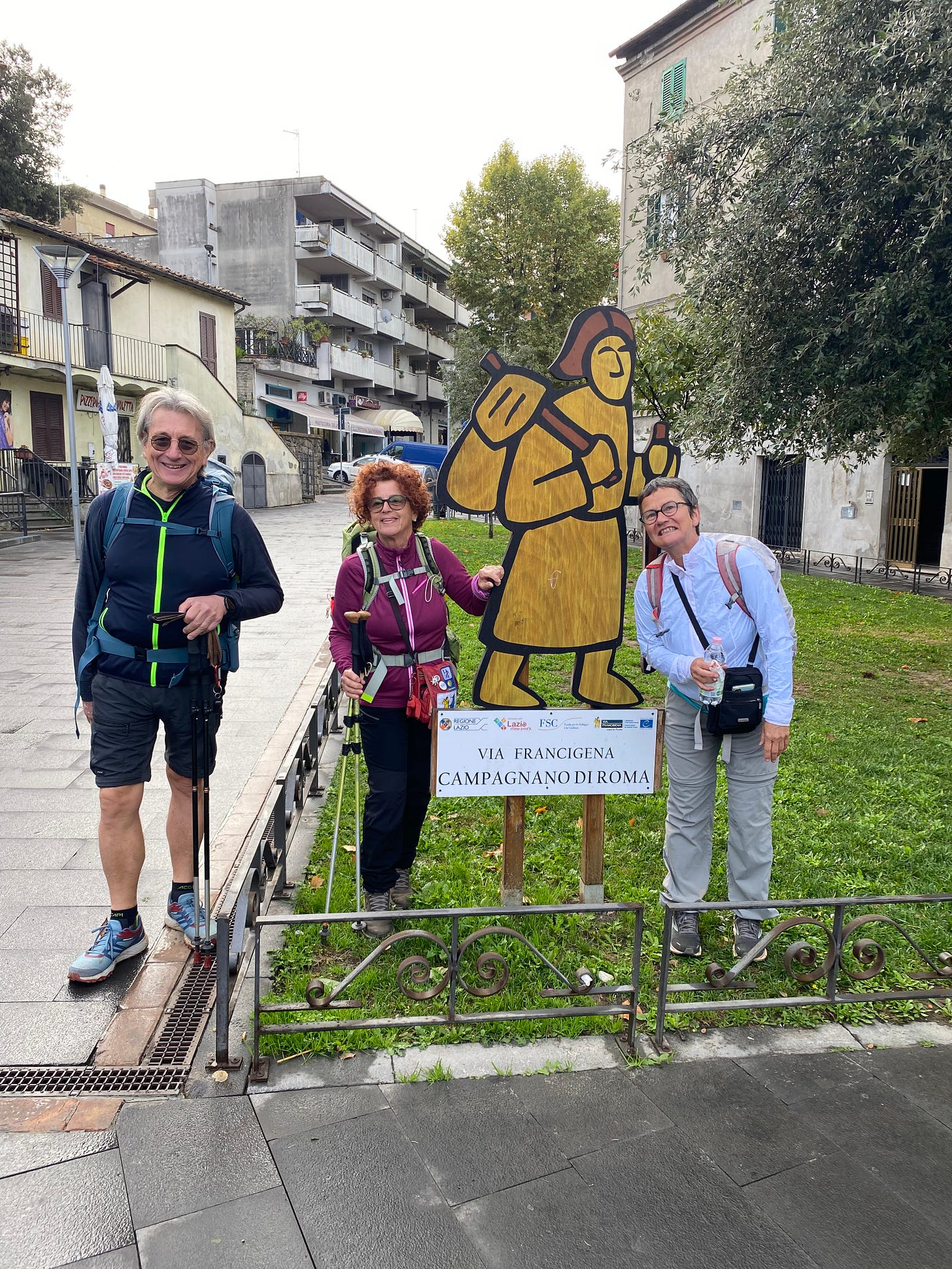
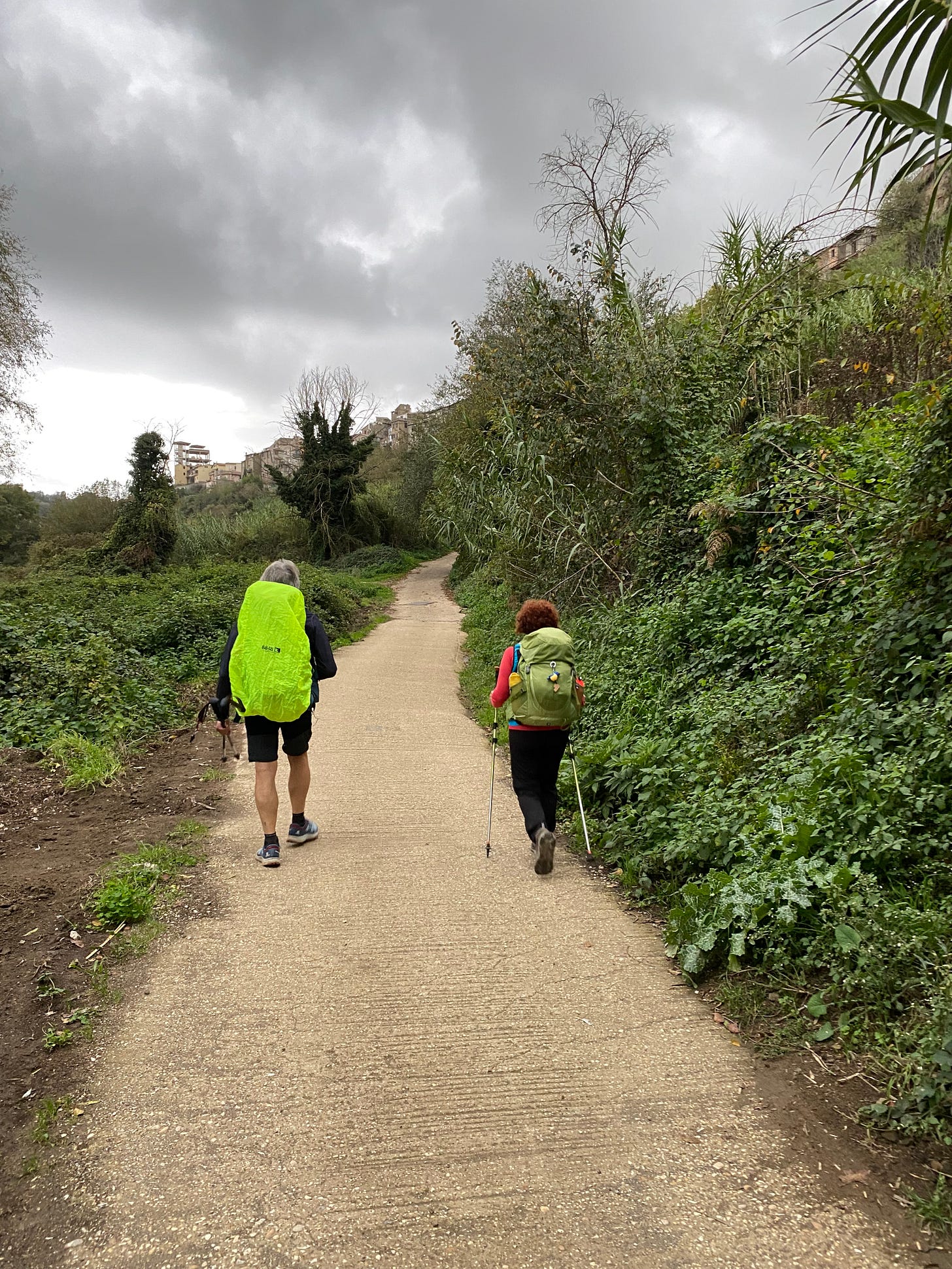
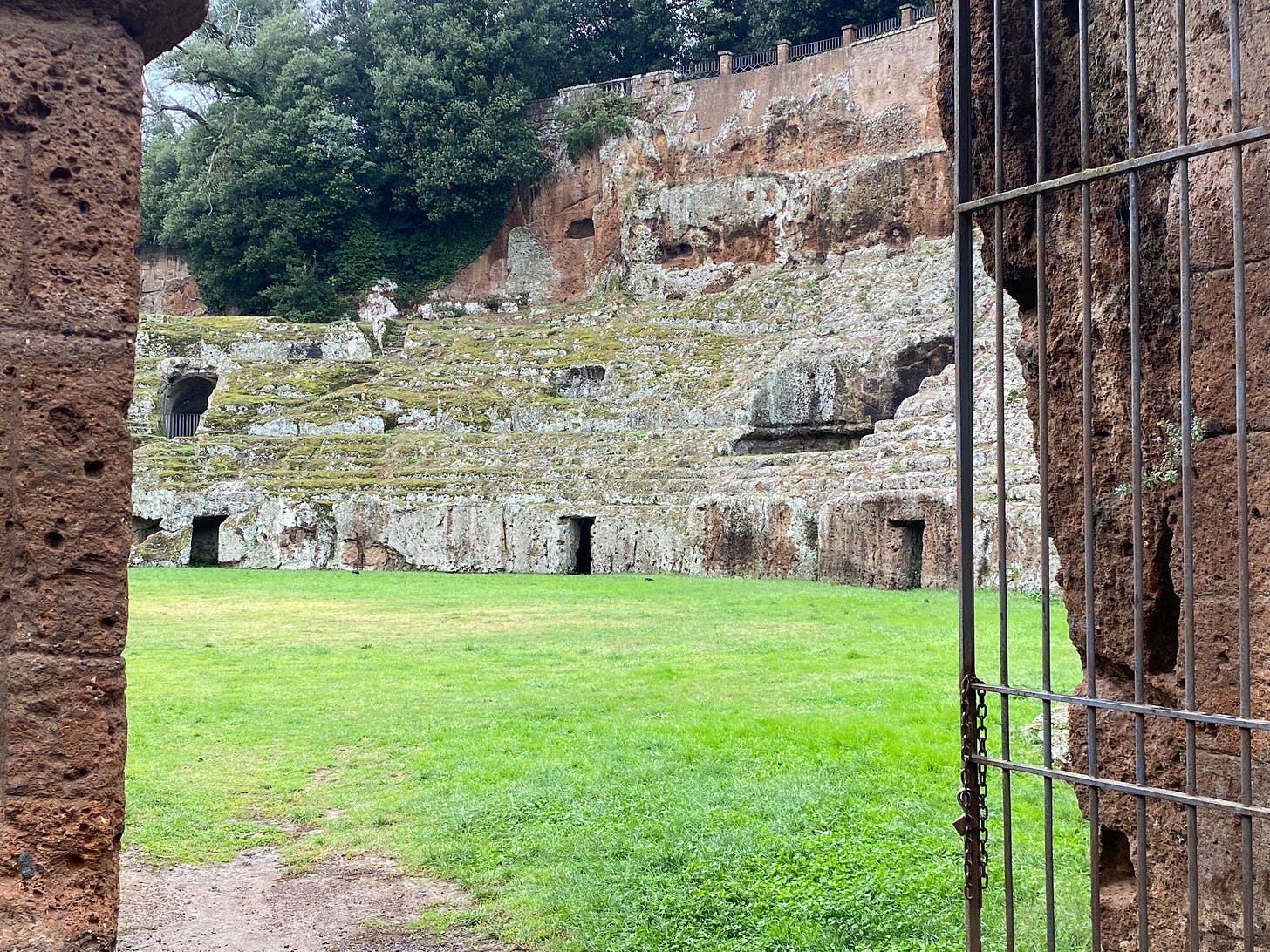
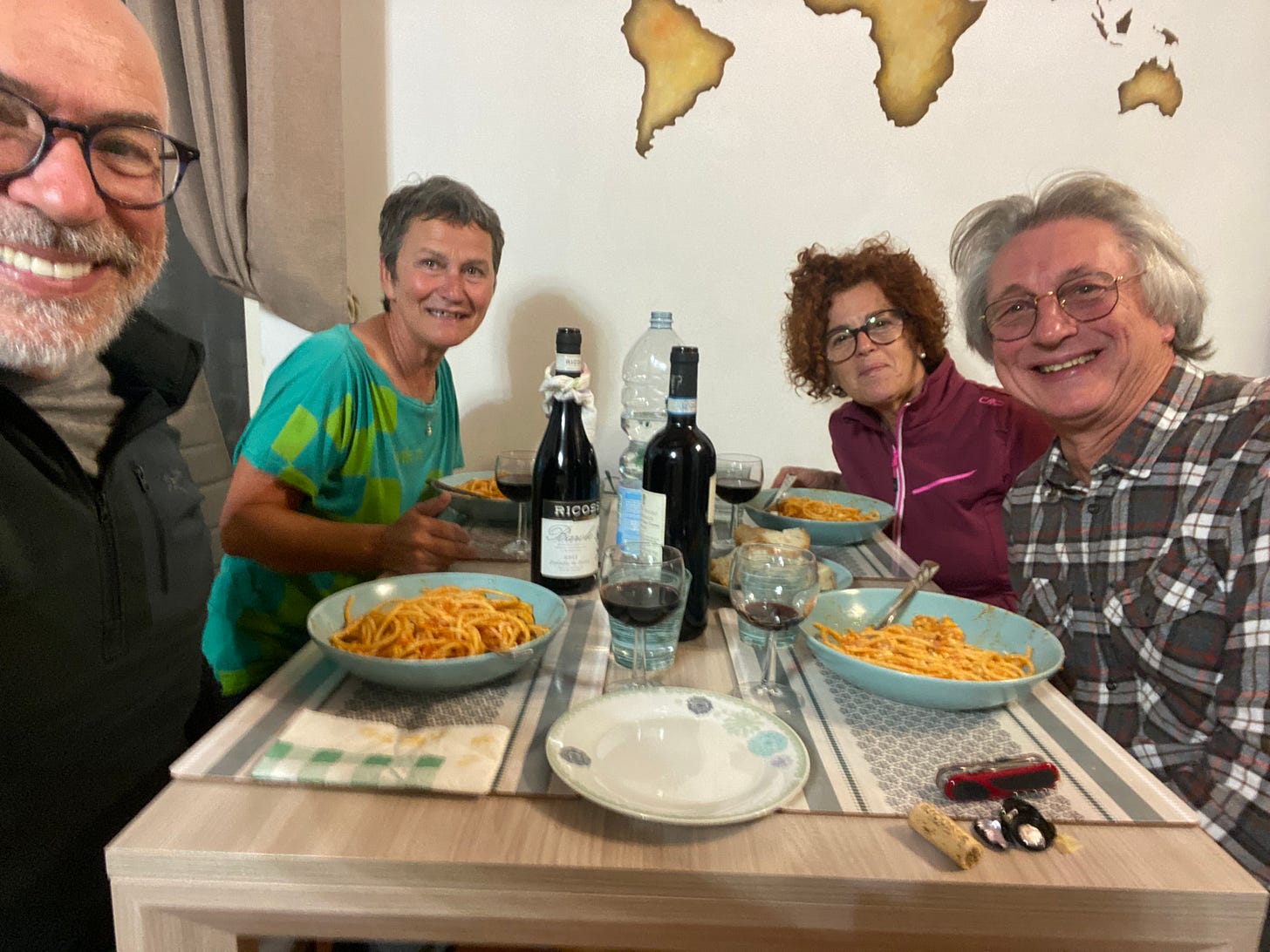
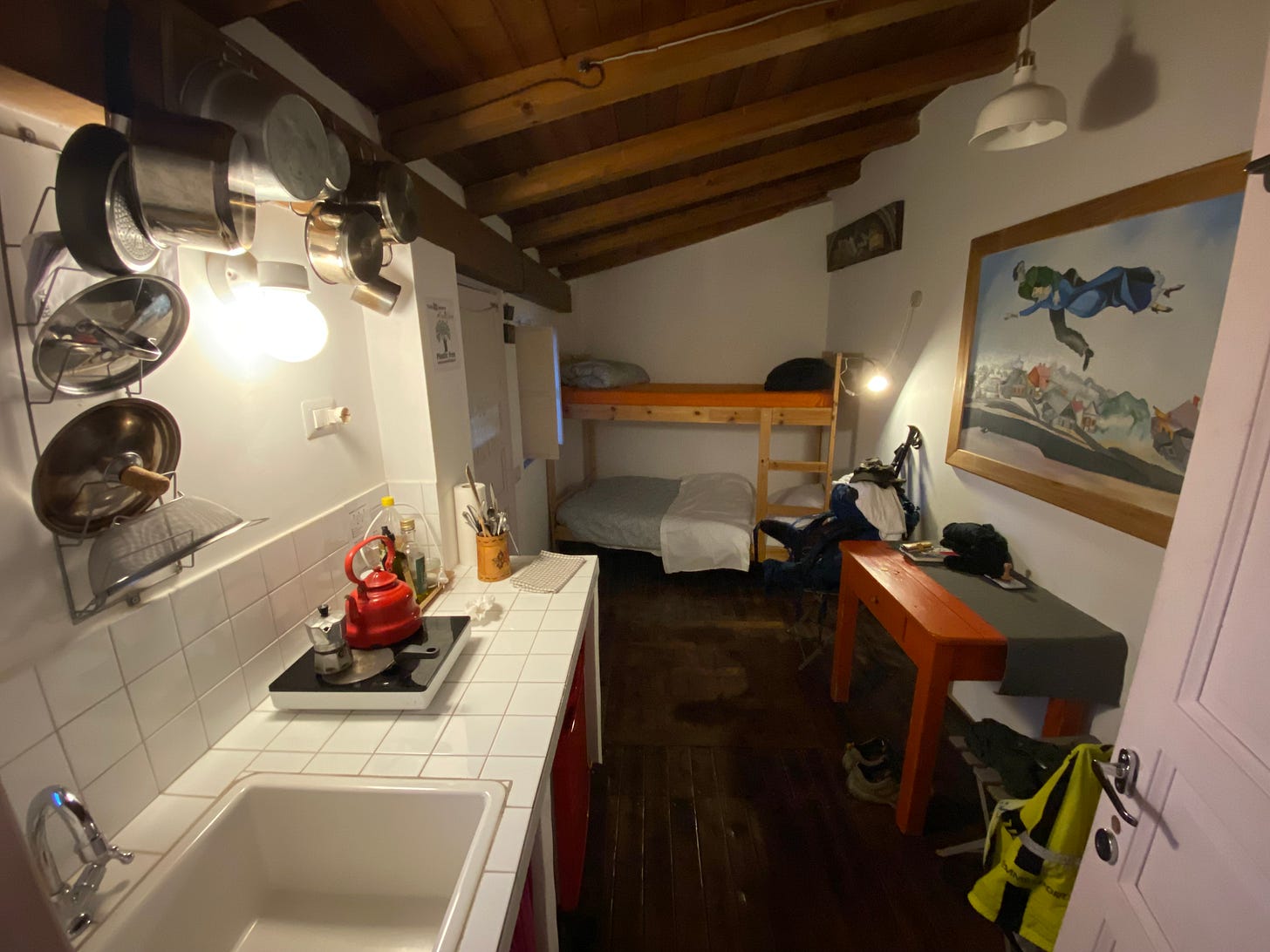
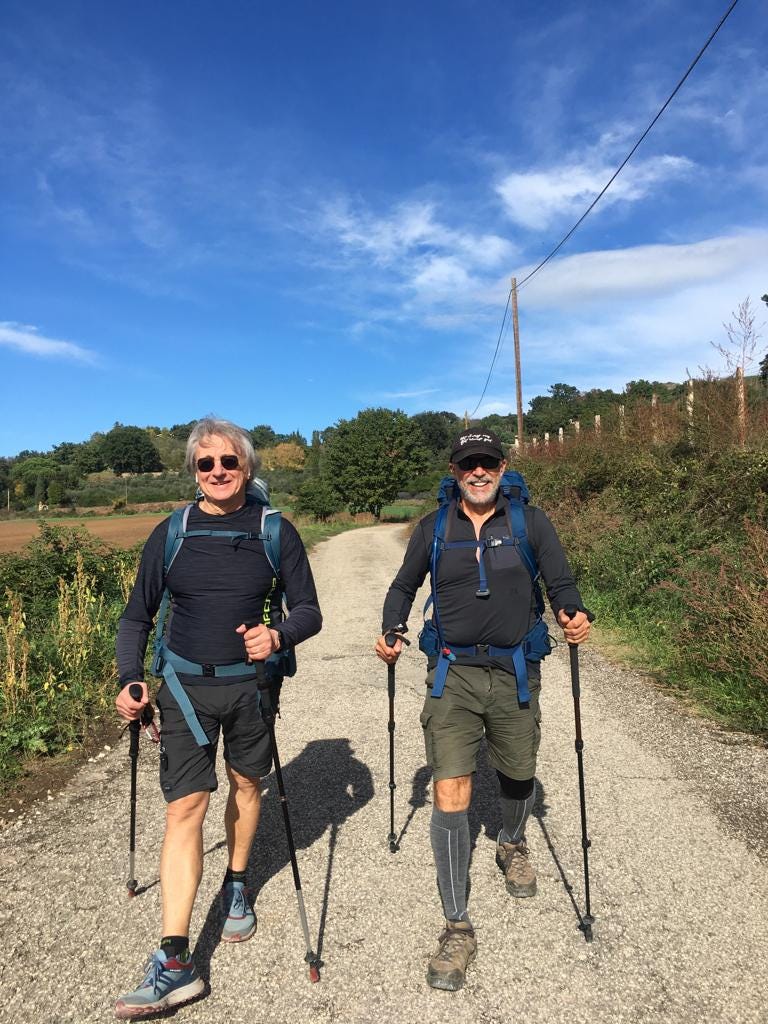
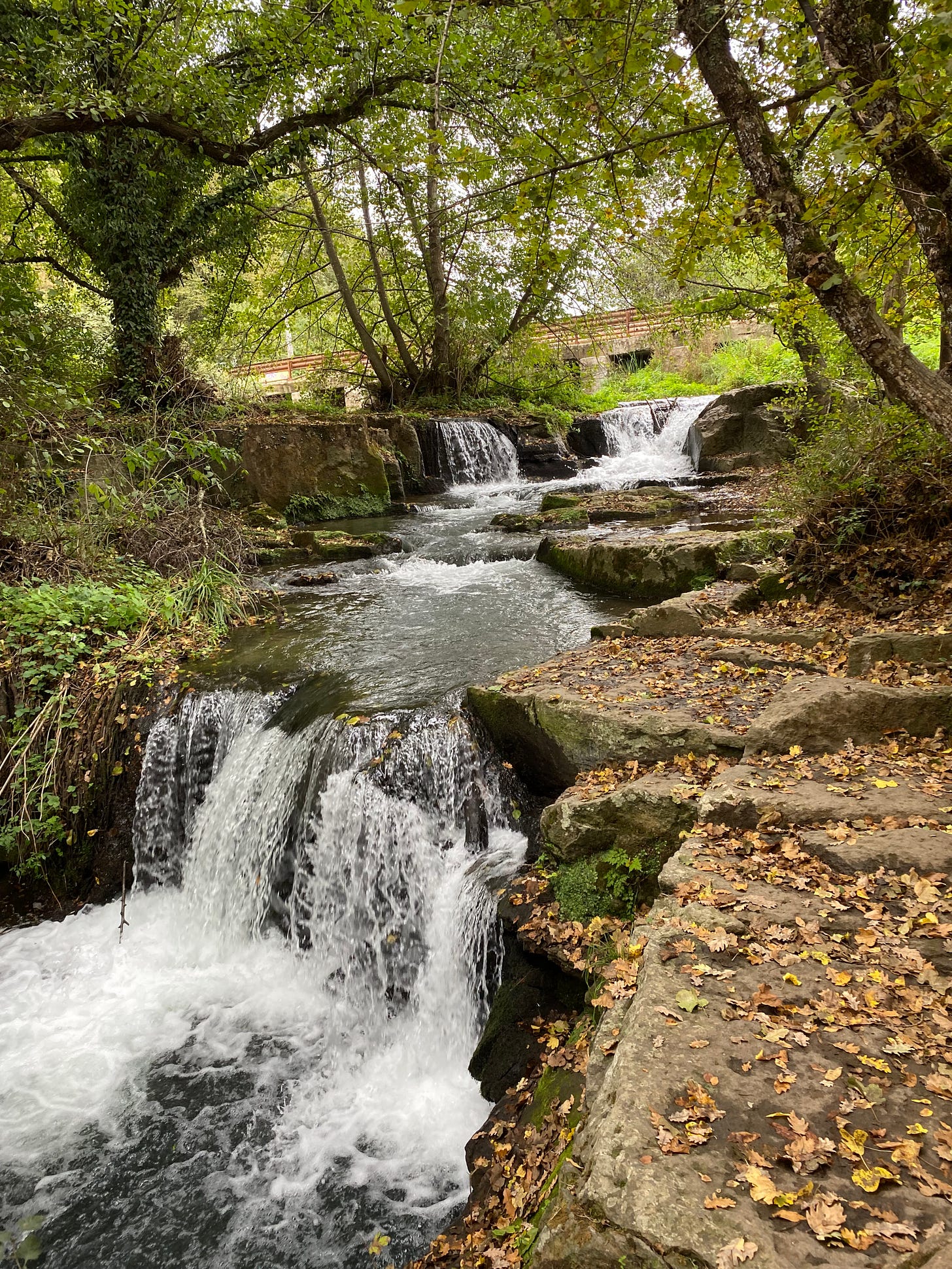
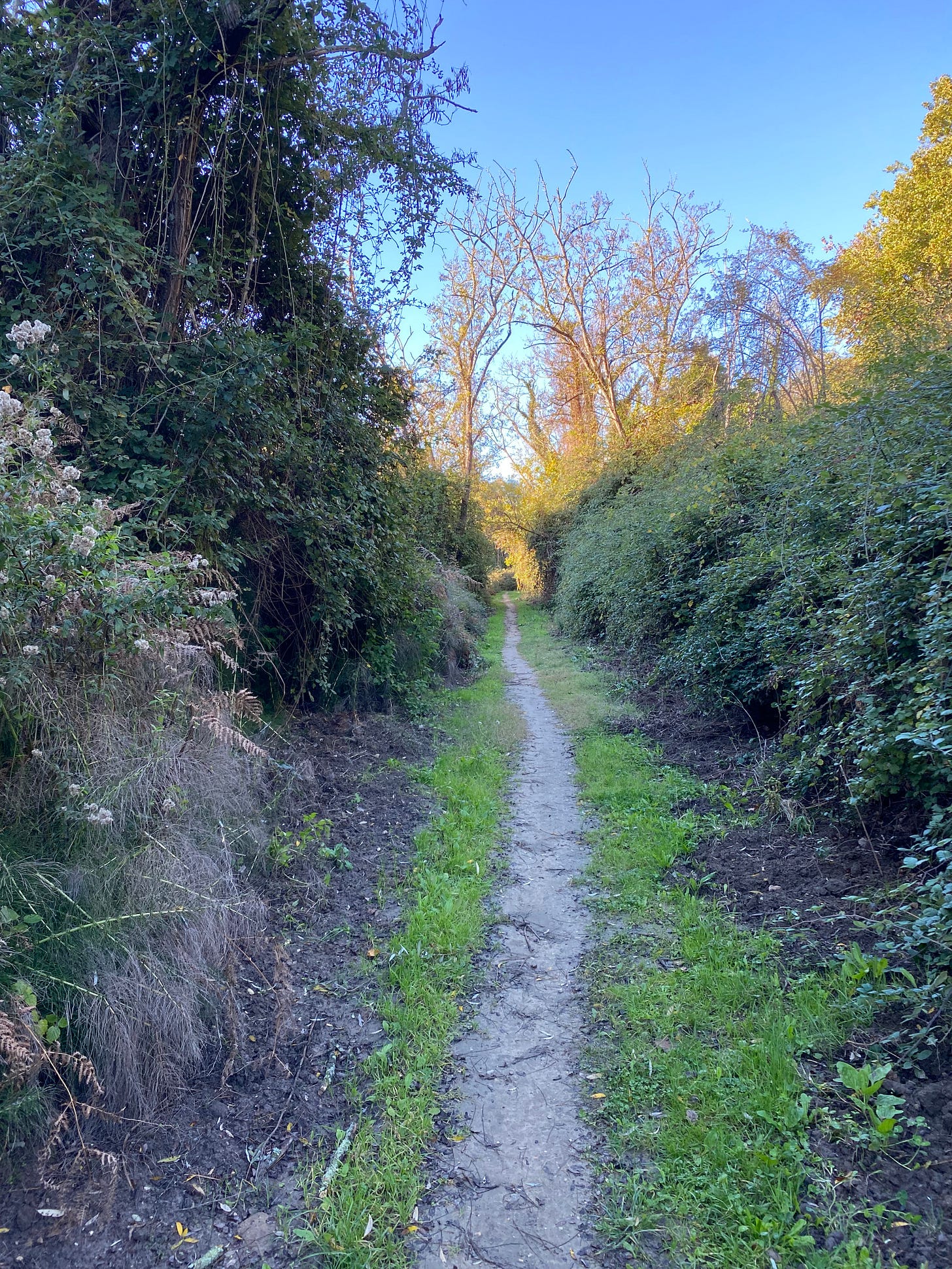

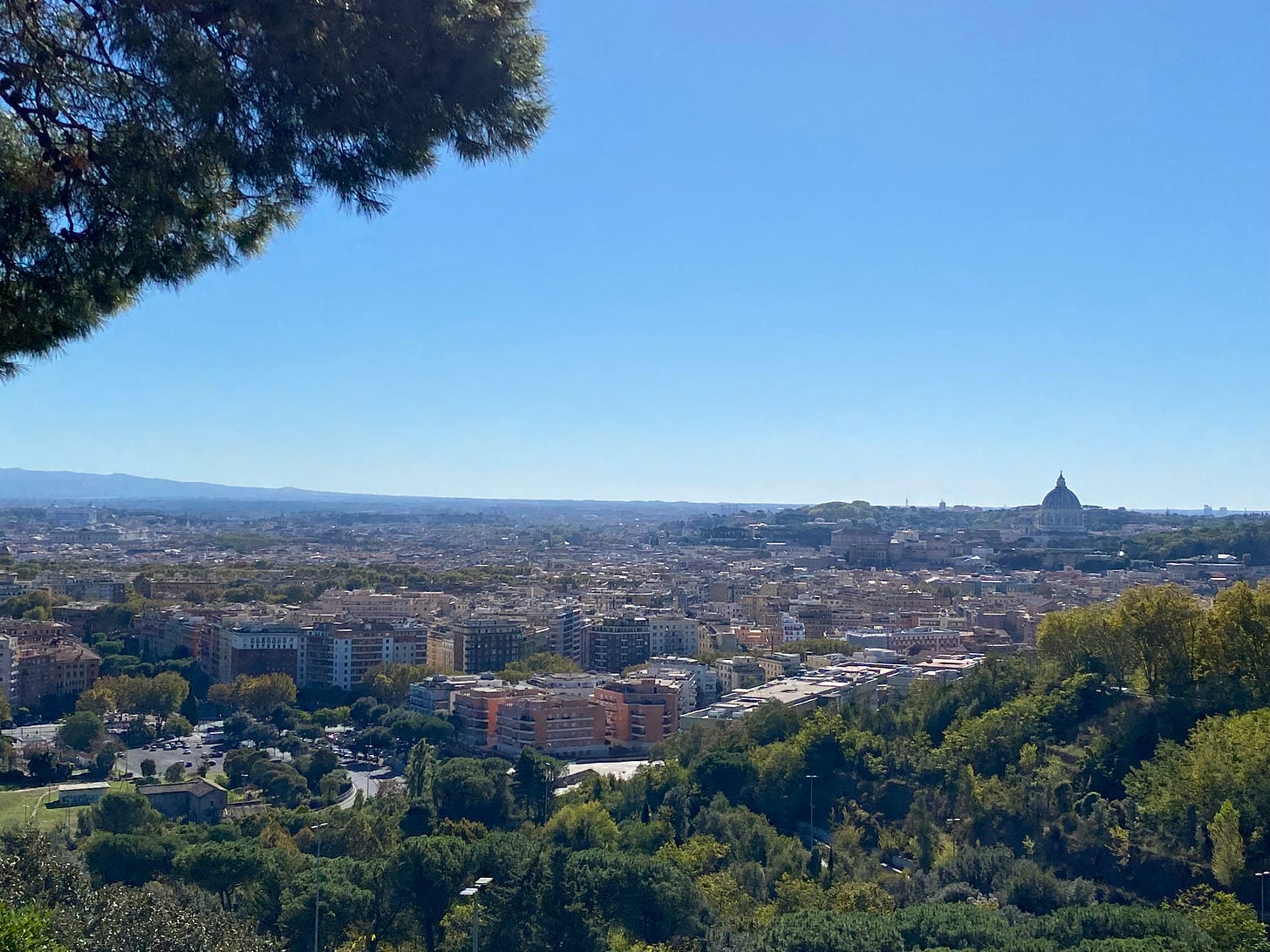
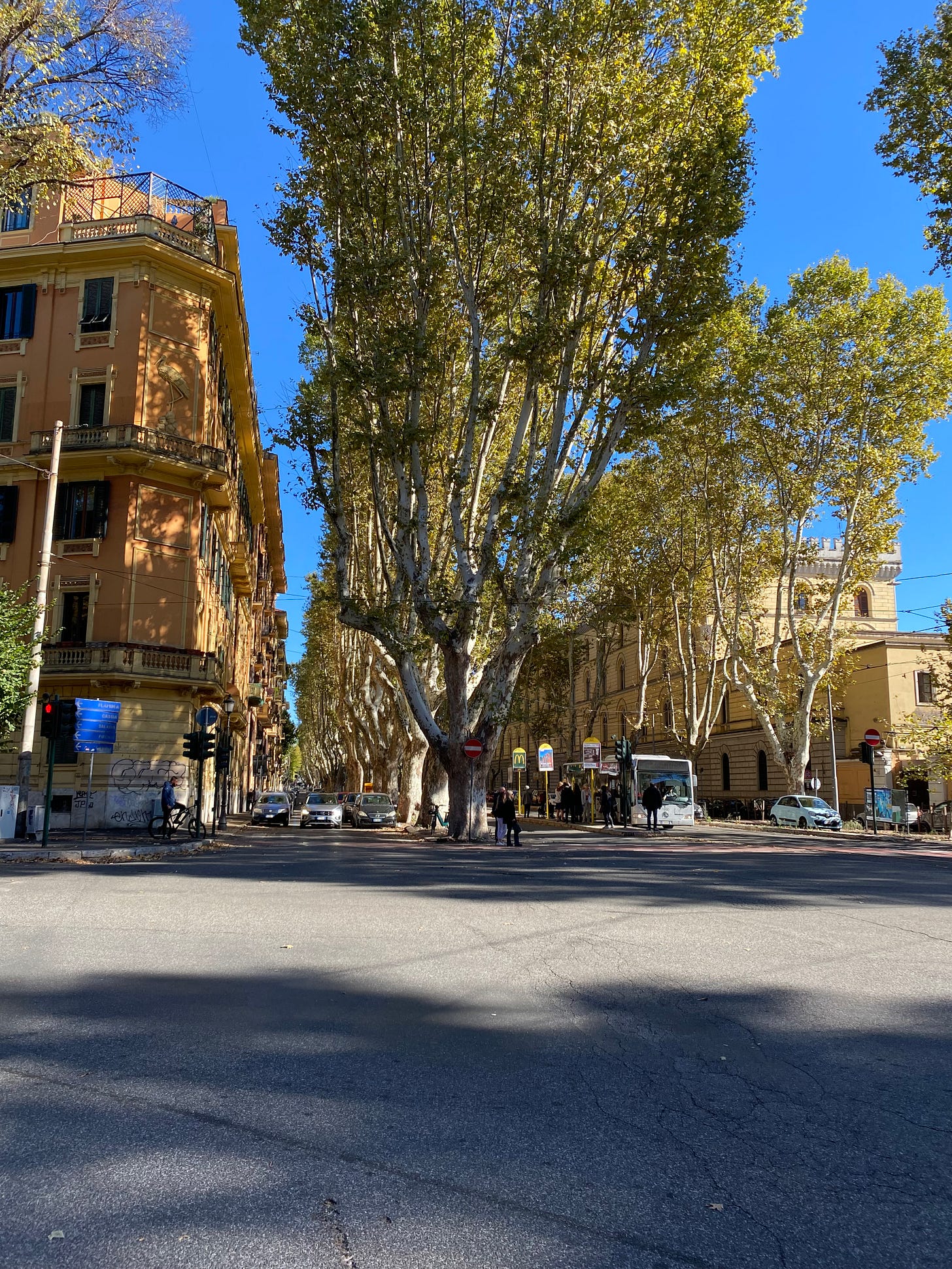
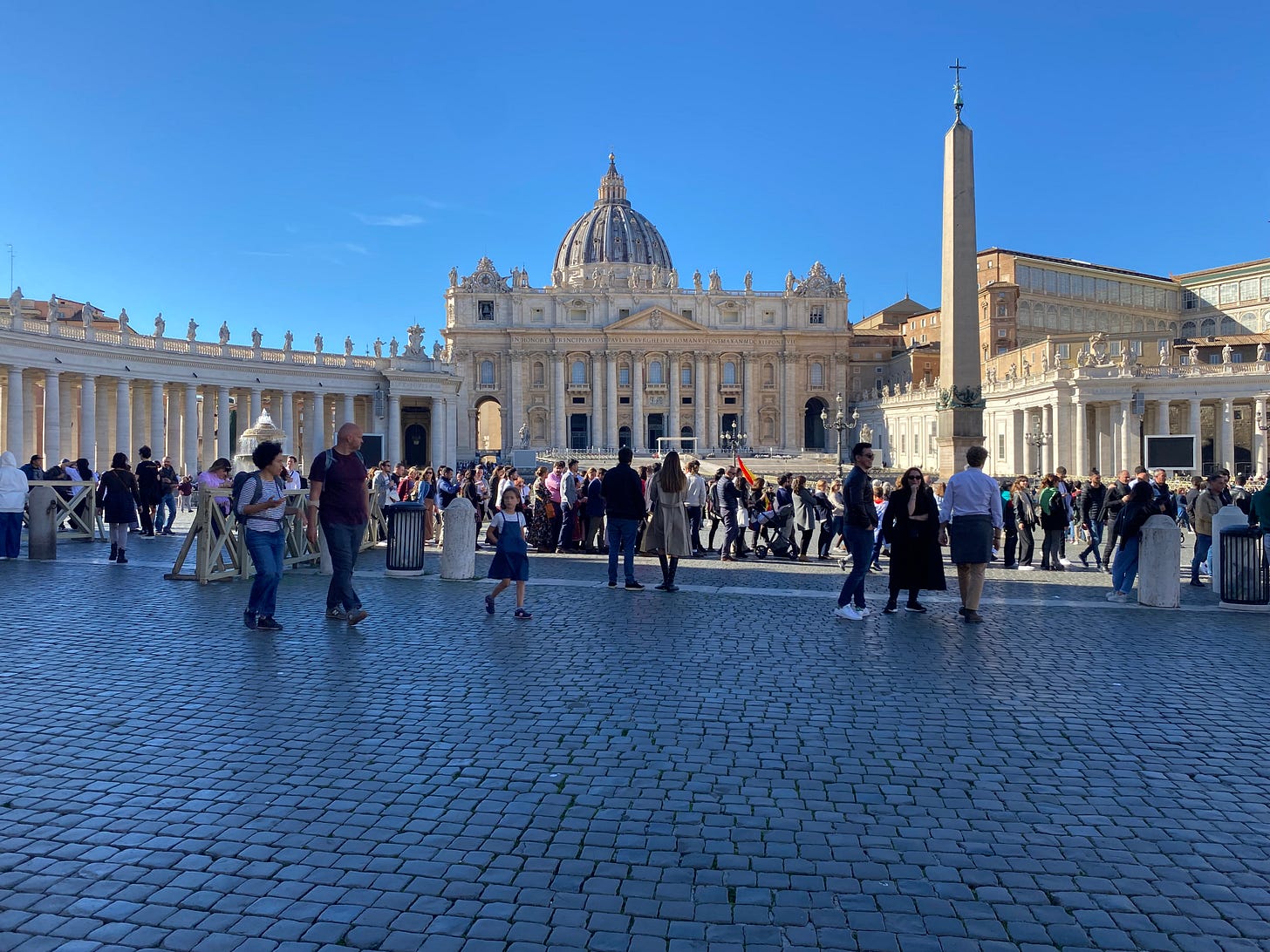
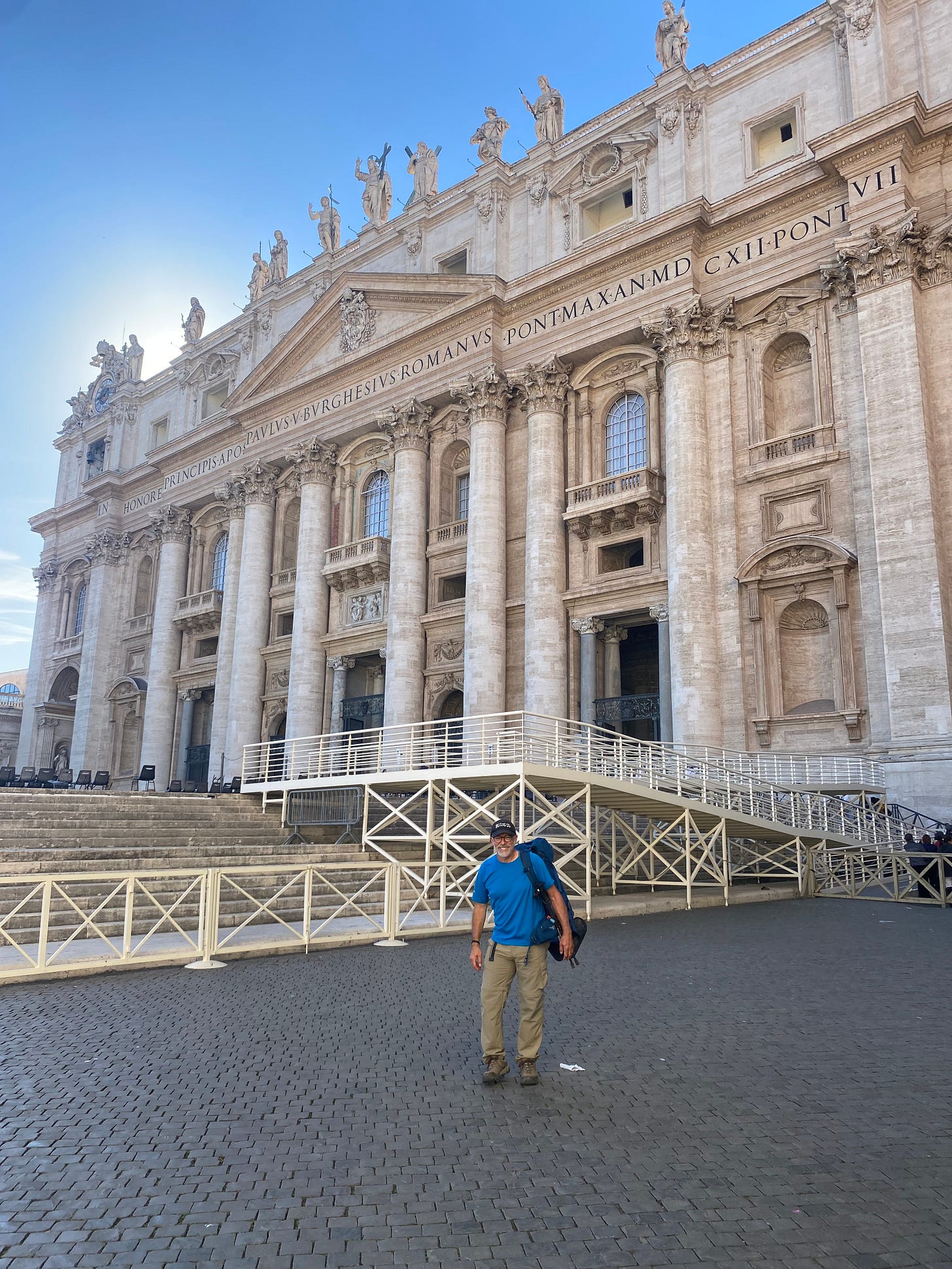
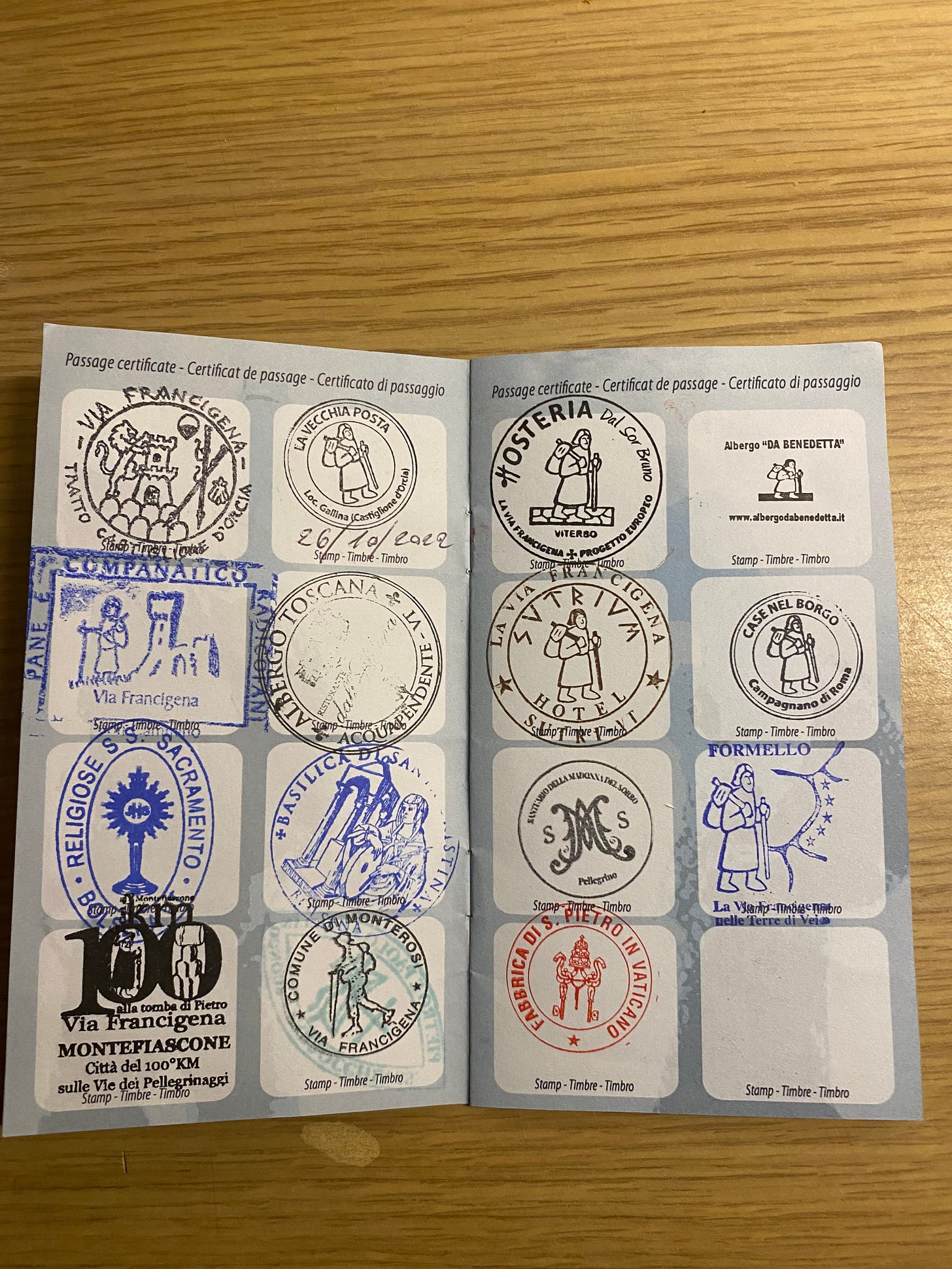




Tu m’as fait pleurer d’émotions quand j’ai lu ton arrivée à Rome. J’ai ressenti un peu la même chose lorsque j’ai réussi un défi que je ne croyais pas pouvoir atteindre.
Le cadeau qu’Emmanuelle t’a préparé est vraiment touchant, quel magnifique souvenir!
Peut-on dire que la morale de cette histoire serait : rencontrer un optométriste éclaire toujours notre vision! 😉
Bravo pour ce texte émouvant.
Tino,
A very engaging story. It made me long for Italy. March 2026 cannot come quickly enough.
Larry Waters